How to Write an Essay Introduction (with Examples)

The introduction of an essay plays a critical role in engaging the reader and providing contextual information about the topic. It sets the stage for the rest of the essay, establishes the tone and style, and motivates the reader to continue reading.

Table of Contents
What is an essay introduction , what to include in an essay introduction, how to create an essay structure , step-by-step process for writing an essay introduction , how to write an introduction paragraph , how to write a hook for your essay , how to include background information , how to write a thesis statement .
- Argumentative Essay Introduction Example:
- Expository Essay Introduction Example
Literary Analysis Essay Introduction Example
Check and revise – checklist for essay introduction , key takeaways , frequently asked questions .
An introduction is the opening section of an essay, paper, or other written work. It introduces the topic and provides background information, context, and an overview of what the reader can expect from the rest of the work. 1 The key is to be concise and to the point, providing enough information to engage the reader without delving into excessive detail.
The essay introduction is crucial as it sets the tone for the entire piece and provides the reader with a roadmap of what to expect. Here are key elements to include in your essay introduction:
- Hook : Start with an attention-grabbing statement or question to engage the reader. This could be a surprising fact, a relevant quote, or a compelling anecdote.
- Background information : Provide context and background information to help the reader understand the topic. This can include historical information, definitions of key terms, or an overview of the current state of affairs related to your topic.
- Thesis statement : Clearly state your main argument or position on the topic. Your thesis should be concise and specific, providing a clear direction for your essay.
Before we get into how to write an essay introduction, we need to know how it is structured. The structure of an essay is crucial for organizing your thoughts and presenting them clearly and logically. It is divided as follows: 2
- Introduction: The introduction should grab the reader’s attention with a hook, provide context, and include a thesis statement that presents the main argument or purpose of the essay.
- Body: The body should consist of focused paragraphs that support your thesis statement using evidence and analysis. Each paragraph should concentrate on a single central idea or argument and provide evidence, examples, or analysis to back it up.
- Conclusion: The conclusion should summarize the main points and restate the thesis differently. End with a final statement that leaves a lasting impression on the reader. Avoid new information or arguments.

Here’s a step-by-step guide on how to write an essay introduction:
- Start with a Hook : Begin your introduction paragraph with an attention-grabbing statement, question, quote, or anecdote related to your topic. The hook should pique the reader’s interest and encourage them to continue reading.
- Provide Background Information : This helps the reader understand the relevance and importance of the topic.
- State Your Thesis Statement : The last sentence is the main argument or point of your essay. It should be clear, concise, and directly address the topic of your essay.
- Preview the Main Points : This gives the reader an idea of what to expect and how you will support your thesis.
- Keep it Concise and Clear : Avoid going into too much detail or including information not directly relevant to your topic.
- Revise : Revise your introduction after you’ve written the rest of your essay to ensure it aligns with your final argument.
Here’s an example of an essay introduction paragraph about the importance of education:
Education is often viewed as a fundamental human right and a key social and economic development driver. As Nelson Mandela once famously said, “Education is the most powerful weapon which you can use to change the world.” It is the key to unlocking a wide range of opportunities and benefits for individuals, societies, and nations. In today’s constantly evolving world, education has become even more critical. It has expanded beyond traditional classroom learning to include digital and remote learning, making education more accessible and convenient. This essay will delve into the importance of education in empowering individuals to achieve their dreams, improving societies by promoting social justice and equality, and driving economic growth by developing a skilled workforce and promoting innovation.
This introduction paragraph example includes a hook (the quote by Nelson Mandela), provides some background information on education, and states the thesis statement (the importance of education).
This is one of the key steps in how to write an essay introduction. Crafting a compelling hook is vital because it sets the tone for your entire essay and determines whether your readers will stay interested. A good hook draws the reader in and sets the stage for the rest of your essay.
- Avoid Dry Fact : Instead of simply stating a bland fact, try to make it engaging and relevant to your topic. For example, if you’re writing about the benefits of exercise, you could start with a startling statistic like, “Did you know that regular exercise can increase your lifespan by up to seven years?”
- Avoid Using a Dictionary Definition : While definitions can be informative, they’re not always the most captivating way to start an essay. Instead, try to use a quote, anecdote, or provocative question to pique the reader’s interest. For instance, if you’re writing about freedom, you could begin with a quote from a famous freedom fighter or philosopher.
- Do Not Just State a Fact That the Reader Already Knows : This ties back to the first point—your hook should surprise or intrigue the reader. For Here’s an introduction paragraph example, if you’re writing about climate change, you could start with a thought-provoking statement like, “Despite overwhelming evidence, many people still refuse to believe in the reality of climate change.”
Including background information in the introduction section of your essay is important to provide context and establish the relevance of your topic. When writing the background information, you can follow these steps:
- Start with a General Statement: Begin with a general statement about the topic and gradually narrow it down to your specific focus. For example, when discussing the impact of social media, you can begin by making a broad statement about social media and its widespread use in today’s society, as follows: “Social media has become an integral part of modern life, with billions of users worldwide.”
- Define Key Terms : Define any key terms or concepts that may be unfamiliar to your readers but are essential for understanding your argument.
- Provide Relevant Statistics: Use statistics or facts to highlight the significance of the issue you’re discussing. For instance, “According to a report by Statista, the number of social media users is expected to reach 4.41 billion by 2025.”
- Discuss the Evolution: Mention previous research or studies that have been conducted on the topic, especially those that are relevant to your argument. Mention key milestones or developments that have shaped its current impact. You can also outline some of the major effects of social media. For example, you can briefly describe how social media has evolved, including positives such as increased connectivity and issues like cyberbullying and privacy concerns.
- Transition to Your Thesis: Use the background information to lead into your thesis statement, which should clearly state the main argument or purpose of your essay. For example, “Given its pervasive influence, it is crucial to examine the impact of social media on mental health.”

A thesis statement is a concise summary of the main point or claim of an essay, research paper, or other type of academic writing. It appears near the end of the introduction. Here’s how to write a thesis statement:
- Identify the topic: Start by identifying the topic of your essay. For example, if your essay is about the importance of exercise for overall health, your topic is “exercise.”
- State your position: Next, state your position or claim about the topic. This is the main argument or point you want to make. For example, if you believe that regular exercise is crucial for maintaining good health, your position could be: “Regular exercise is essential for maintaining good health.”
- Support your position: Provide a brief overview of the reasons or evidence that support your position. These will be the main points of your essay. For example, if you’re writing an essay about the importance of exercise, you could mention the physical health benefits, mental health benefits, and the role of exercise in disease prevention.
- Make it specific: Ensure your thesis statement clearly states what you will discuss in your essay. For example, instead of saying, “Exercise is good for you,” you could say, “Regular exercise, including cardiovascular and strength training, can improve overall health and reduce the risk of chronic diseases.”
Examples of essay introduction
Here are examples of essay introductions for different types of essays:
Argumentative Essay Introduction Example:
Topic: Should the voting age be lowered to 16?
“The question of whether the voting age should be lowered to 16 has sparked nationwide debate. While some argue that 16-year-olds lack the requisite maturity and knowledge to make informed decisions, others argue that doing so would imbue young people with agency and give them a voice in shaping their future.”
Expository Essay Introduction Example
Topic: The benefits of regular exercise
“In today’s fast-paced world, the importance of regular exercise cannot be overstated. From improving physical health to boosting mental well-being, the benefits of exercise are numerous and far-reaching. This essay will examine the various advantages of regular exercise and provide tips on incorporating it into your daily routine.”
Text: “To Kill a Mockingbird” by Harper Lee
“Harper Lee’s novel, ‘To Kill a Mockingbird,’ is a timeless classic that explores themes of racism, injustice, and morality in the American South. Through the eyes of young Scout Finch, the reader is taken on a journey that challenges societal norms and forces characters to confront their prejudices. This essay will analyze the novel’s use of symbolism, character development, and narrative structure to uncover its deeper meaning and relevance to contemporary society.”
- Engaging and Relevant First Sentence : The opening sentence captures the reader’s attention and relates directly to the topic.
- Background Information : Enough background information is introduced to provide context for the thesis statement.
- Definition of Important Terms : Key terms or concepts that might be unfamiliar to the audience or are central to the argument are defined.
- Clear Thesis Statement : The thesis statement presents the main point or argument of the essay.
- Relevance to Main Body : Everything in the introduction directly relates to and sets up the discussion in the main body of the essay.

Writing a strong introduction is crucial for setting the tone and context of your essay. Here are the key takeaways for how to write essay introduction: 3
- Hook the Reader : Start with an engaging hook to grab the reader’s attention. This could be a compelling question, a surprising fact, a relevant quote, or an anecdote.
- Provide Background : Give a brief overview of the topic, setting the context and stage for the discussion.
- Thesis Statement : State your thesis, which is the main argument or point of your essay. It should be concise, clear, and specific.
- Preview the Structure : Outline the main points or arguments to help the reader understand the organization of your essay.
- Keep it Concise : Avoid including unnecessary details or information not directly related to your thesis.
- Revise and Edit : Revise your introduction to ensure clarity, coherence, and relevance. Check for grammar and spelling errors.
- Seek Feedback : Get feedback from peers or instructors to improve your introduction further.
The purpose of an essay introduction is to give an overview of the topic, context, and main ideas of the essay. It is meant to engage the reader, establish the tone for the rest of the essay, and introduce the thesis statement or central argument.
An essay introduction typically ranges from 5-10% of the total word count. For example, in a 1,000-word essay, the introduction would be roughly 50-100 words. However, the length can vary depending on the complexity of the topic and the overall length of the essay.
An essay introduction is critical in engaging the reader and providing contextual information about the topic. To ensure its effectiveness, consider incorporating these key elements: a compelling hook, background information, a clear thesis statement, an outline of the essay’s scope, a smooth transition to the body, and optional signposting sentences.
The process of writing an essay introduction is not necessarily straightforward, but there are several strategies that can be employed to achieve this end. When experiencing difficulty initiating the process, consider the following techniques: begin with an anecdote, a quotation, an image, a question, or a startling fact to pique the reader’s interest. It may also be helpful to consider the five W’s of journalism: who, what, when, where, why, and how. For instance, an anecdotal opening could be structured as follows: “As I ascended the stage, momentarily blinded by the intense lights, I could sense the weight of a hundred eyes upon me, anticipating my next move. The topic of discussion was climate change, a subject I was passionate about, and it was my first public speaking event. Little did I know , that pivotal moment would not only alter my perspective but also chart my life’s course.”
Crafting a compelling thesis statement for your introduction paragraph is crucial to grab your reader’s attention. To achieve this, avoid using overused phrases such as “In this paper, I will write about” or “I will focus on” as they lack originality. Instead, strive to engage your reader by substantiating your stance or proposition with a “so what” clause. While writing your thesis statement, aim to be precise, succinct, and clear in conveying your main argument.
To create an effective essay introduction, ensure it is clear, engaging, relevant, and contains a concise thesis statement. It should transition smoothly into the essay and be long enough to cover necessary points but not become overwhelming. Seek feedback from peers or instructors to assess its effectiveness.
References
- Cui, L. (2022). Unit 6 Essay Introduction. Building Academic Writing Skills .
- West, H., Malcolm, G., Keywood, S., & Hill, J. (2019). Writing a successful essay. Journal of Geography in Higher Education , 43 (4), 609-617.
- Beavers, M. E., Thoune, D. L., & McBeth, M. (2023). Bibliographic Essay: Reading, Researching, Teaching, and Writing with Hooks: A Queer Literacy Sponsorship. College English, 85(3), 230-242.
Paperpal is a comprehensive AI writing toolkit that helps students and researchers achieve 2x the writing in half the time. It leverages 21+ years of STM experience and insights from millions of research articles to provide in-depth academic writing, language editing, and submission readiness support to help you write better, faster.
Get accurate academic translations, rewriting support, grammar checks, vocabulary suggestions, and generative AI assistance that delivers human precision at machine speed. Try for free or upgrade to Paperpal Prime starting at US$19 a month to access premium features, including consistency, plagiarism, and 30+ submission readiness checks to help you succeed.
Experience the future of academic writing – Sign up to Paperpal and start writing for free!
Related Reads:
- What is an Argumentative Essay? How to Write It (With Examples)
- How to Paraphrase Research Papers Effectively
- How to Cite Social Media Sources in Academic Writing?
- How Long Should a Chapter Be?
Similarity Checks: The Author’s Guide to Plagiarism and Responsible Writing
Types of plagiarism and 6 tips to avoid it in your writing , you may also like, how to use paperpal to generate emails &..., ai in education: it’s time to change the..., is it ethical to use ai-generated abstracts without..., do plagiarism checkers detect ai content, word choice problems: how to use the right..., how to avoid plagiarism when using generative ai..., what are journal guidelines on using generative ai..., types of plagiarism and 6 tips to avoid..., similarity checks: the author’s guide to plagiarism and..., what is a master’s thesis: a guide for....
- Link to facebook
- Link to linkedin
- Link to twitter
- Link to youtube
- Writing Tips
How to Write an Excellent Essay Introduction
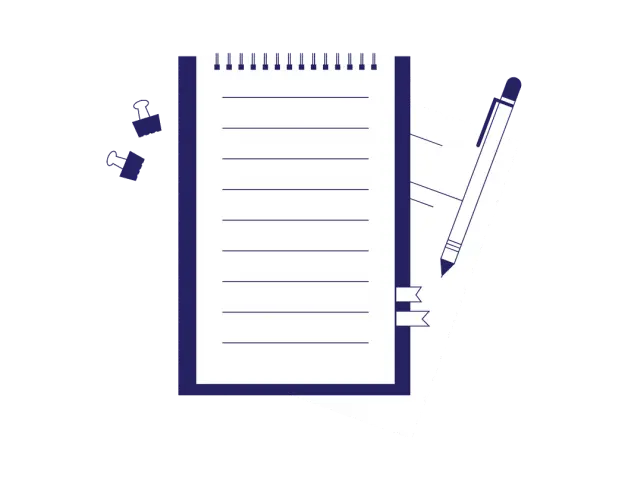
3-minute read
- 27th September 2022
Love it or hate it, essay writing is a big part of student life. Writing a great essay might seem like a daunting task, especially when you’re staring at a blank document, but there are formulas you can follow to make sure your paper hits the mark.
When you plan your essays , don’t neglect your introduction! It might seem like a trivial part of the paper, but it can make it or break it. A badly written introduction can leave your reader feeling confused about the topic and what to expect from your essay.
To help your writing reach its full potential, we’ve put together a guide to writing an excellent essay introduction.
How to Write an Essay Introduction
An essay introduction has four main steps:
● Hook your reader
● Provide context
● Present your thesis statement
● Map your essay
Hook Your Reader
The first part of your introduction should be the hook. This is where you introduce the reader to the topic of the essay. A great hook should be clear, concise, and catchy. It doesn’t need to be long; a hook can be just one sentence.
Provide Context
In this section, introduce your reader to key definitions, ideas, and background information to help them understand your argument.
Present Your Thesis Statement
A thesis statement tells the reader the main point or argument of the essay. This can be just one sentence, or it can be a few sentences.
Map Your Essay
Before you wrap up your essay introduction, map it! This means signposting sections of your essay. The key here is to be concise. The purpose of this part of the introduction is to give your reader a sense of direction.
Here’s an example of an essay introduction:
Hook: Suspense is key for dramatic stories, and Shakespeare is well-known and celebrated for writing suspenseful plays.
Context: While there are many ways in which Shakespeare created suspension for his viewers, two techniques he used effectively were foreshadowing and dramatic irony. Foreshadowing is a literary device that hints at an event or situation that is yet to happen. Dramatic irony is a literary technique, originally used in Greek tragedy, by which the full significance of a character’s words or actions is clear to the audience or reader, although it is unknown to the character.
Find this useful?
Subscribe to our newsletter and get writing tips from our editors straight to your inbox.
Thesis statement: Foreshadowing and dramatic irony are two powerful techniques that Shakespeare used to create suspense in literature. These methods have been used to keep the reader intrigued, excited, or nervous about what is to come in many of his celebrated works.
Essay mapping: In this essay, I will be detailing how Shakespeare uses foreshadowing and dramatic irony to create suspense, with examples from Romeo and Juliet and Othello.
Pro tip: Essays take twists and turns. We recommend changing your introduction as necessary while you write the main text to make sure it fully aligns with your final draft.
Proofread and Editing
Proofreading is an essential part of delivering a great essay. We offer a proofreading and editing service for students and academics that will provide you with expert editors to check your work for any issues with:
● Grammar
● Spelling
● Formatting
● Tone
● Audience
● Consistency
● Accuracy
● Clarity
Want 500 words of your work proofread completely free of charge?
Share this article:
Post A New Comment
Got content that needs a quick turnaround? Let us polish your work. Explore our editorial business services.
What is a content editor.
Are you interested in learning more about the role of a content editor and the...
4-minute read
The Benefits of Using an Online Proofreading Service
Proofreading is important to ensure your writing is clear and concise for your readers. Whether...
2-minute read
6 Online AI Presentation Maker Tools
Creating presentations can be time-consuming and frustrating. Trying to construct a visually appealing and informative...
What Is Market Research?
No matter your industry, conducting market research helps you keep up to date with shifting...
8 Press Release Distribution Services for Your Business
In a world where you need to stand out, press releases are key to being...
How to Get a Patent
In the United States, the US Patent and Trademarks Office issues patents. In the United...

Make sure your writing is the best it can be with our expert English proofreading and editing.
How to write an Essay Introduction (5-Step Formula)

One of my friends – a high-up professor in an English university – told me he can tell the grade a student will get within the first 90 seconds of reading a paper.
This makes the introduction the most important paragraph in your whole paper.
The introduction orients your reader to how well you understand academic writing, your skills in critical thinking, your ability to write professionally with minimal errors, and the depth of knowledge you have on the topic.
All in one fantastic paragraph! No pressure.
No wonder introductions are so difficult to write. If you’re like me, you find that you can sit and stare at a blank page as the moments tick by. You’re just not sure how to write an introduction!
After reading the top 30 online articles on how to write an essay introduction, I synthesized the five most common steps that universities give on how to write an introduction.
The five steps I am going to introduce to you in this paragraph are from my I.N.T.R.O. method. The intro method provides an easy-to-use acronym for how to write an introduction that the top universities recommend.
The INTRO method’s steps are:
- [I] Interest: Provide an opening sentence that shows why the topic is of interest to everyday human beings
- [N] Notify: Notify the reader of background or contextual information
- [T] Translate: Translate the essay topic or question by paraphrasing it
- [R] Report: Report on your position or argument
- [O] Outline: Provide an outline of the essay structure
Below, I go through each step one by one. Each step is designed to be written in order, although you may feel free to mix them up after you’ve written each sentence to make it feel and read just the way you like.
Use the INTRO method as a guide for how to write an introduction and get words down on paper. As I often argue on this website, just writing something is often the hardest part .
You may also find that some essay introductions work better without one or more of these 5 steps. That is okay, too. Use these 5 steps as advice on points to include in an introduction and adjust them as you need. You may find in your specific area of study you need to add or remove other sentences. Play around with your introduction until you feel comfortable with it.
So don’t be too hard on yourself: have a go at a draft of your introduction with no pressure to use it in the end. You’ll find by the time you’ve written these five sentences you’ll have the creative juices flowing and a compelling introduction will be down on paper in no time.
1. Interest
Provide an opening sentence that shows why the topic is interesting to everyday human beings
Nearly every source on how to write an introduction that I found online recommended that your first sentence be an engaging ‘hook’ . Most sources highlight that the ‘hook’ sentence should draw in the reader’s interest in order to make your piece stand out.
The marker wants to see if you understand why this topic is of interest is in the first place. They want to see if you ‘get it’ from the very start.
I also recommend that you view the hook as an opportunity to show why the topic is interesting to everyday human beings . This makes it relevant to your reader.
To show you understand why the topic is of interest in the first place, aim to do one of the following things:
- Show what makes the topic worth discussing. Your ‘Interest’ sentence might help show why someone should care about the topic. Will it affect our livelihoods? Will it harm us? Make our work lives easier? The more relatable this point is to real human lives, the better.
- Highlight the single most interesting point in the essay. You might notice that you have already pointed out this interesting ‘hook’ somewhere in your essay. Find that interesting, relatable point and make it the opening sentence of your introduction.
- Use an interesting fact or figure to show the topic’s importance. Percentages or real numbers about how many people are or would be impacted by the issue help to show the topic’s importance. This will create reader interest with a ‘wow’ factor.
- Show how the essay topic is relevant to today’s world. If you’re struggling to identify this interesting ‘hook’, go onto google and find news reports related to your topic. How has the topic made it into the news recently? The news report will help you to brainstorm why this topic is of interest to the everyday lives of real human beings.
However, do not overstate the issue. You should provide a clear, reasonable perspective in this first sentence rather than an over-the-top claim. For example, aim to avoid hyperbolic or overly emotional phrases:
To find out more about retracting over-the-top emotion and hyperbole, we have put together a guide on academic language that you may like to read.
To summarize, I recommend that your first step in how to write an introduction is to write a ‘hook’ sentence that focuses on why the topic is interesting to everyday human beings . Use sober, clear facts about the importance of the topic to real human lives to get yourself started.
Read Also: My Suggested Best Words to Start a Paragraph
Notify the reader of background or contextual information
Nearly every source I found also recommended that you provide brief ‘background’ or ‘contextual’ information.
‘Background’ or ‘contextual’ information shows your depth of knowledge and understanding of the topic.
Here are some examples of ‘context’ for a few topics:
Hopefully, you can see here that giving ‘context’ is a way of showing that you have a really strong or deep knowledge of the history or background story of the topic. This is your chance to differentiate your depth of knowledge from other students. A sentence or two giving some of this context also helps to show off your knowledge right from the start.
Most sources recommend only providing one or two sentences of background information. This will help you to show off your knowledge without stealing content from the body of your essay. The body of the essay will add depth and detail to your points in the introduction, so feel free to leave out examples and explanations beyond your engaging sentence or two: you will have time in the body of the essay to elaborate.
3. Translate
Translate the essay topic or question
This point was mentioned by more than half the websites I found giving advice on how to write an introduction.
Many universities recommend re-stating the essay topic or question in your own words. This helps your marker to see that you understand the topic and are directly addressing it.
Here are some examples of essay questions and ways you can re-state the essay question in your introduction:
Something to keep in mind is that you do not want to appear to be re-stating the essay question simply to take up extra words. We call this ‘padding’. An example of padding is when a student drops the essay question in as a question, word-for-word:
- How can knowledge about history help us to improve our lives in the future? This is the question that will be answered in this essay.
- This essay will answer the question “What is the lasting impact of European Colonisation in the 21 st Century?”
Do not drop the essay question into the introduction without paraphrasing or surrounding explanation. If you do this, your marker will think you’re just trying to add words to the introduction because you’re not sure of anything interesting to say
Report your position or argument
Most essays do not require you to take a stance on an issue.
Essays that do require you to take a stance are called either ‘argumentative essays’ or ‘persuasive essays’.
If you are writing a persuasive essay, you will need to include Step 4: Report. For this step, you’ll need to state where you stand on the issue:
Keep in mind that essays should never leave a reader confused. Essay writing is not like creative writing: your reader must always know what’s going to be said right from the start. When reading to gather information, readers don’t like to be surprised. They want the facts up-front. Therefore, your marker will expect to know what your stance is on the issue right from the introduction onwards.
Provide an outline of the Essay Structure
This last point on how to write an introduction is important and separates average students from top students.
Introductions should always highlight the key points that will be made in an essay. Academic writing should never surprise the reader.
The fact that steps 4 and 5 both highlight that you should orient your marker reinforces the importance of this. Always, always, guide your marker’s reading experience.
Your essay should signpost all key concepts, theories, and main sections that make up your essay. If an important point is made in the essay but not signposted in the introduction, you are likely to confuse your marker. A confused marker very rapidly lowers your mark.
Too often, students fail to outline key points of their essays in the introduction. Make a habit of signposting your key ideas, points, theories, or concepts you will cover in the introduction in order to gain marks.
It is always easier to write this outline once the essay plan is written. You will then be able to gather together the key points that you listed in your essay plan and include them in the introduction.
The outline of the essay structure can only be one or two sentences long. You can state as your last sentence in your introduction:
- “Firstly, this essay … then, …, and finally …”
- “The essay opens with …, then, …, and then closes with …”
- “After exploring …, … and …, this essay will conclude with …”
Try to outline the issues you will cover in order. Providing an orderly outline of your essay is very helpful for your reader.
Now, I know that some people don’t like this method. Let me reassure you with this study from Theresa Thonney in 2016. Thonney examined 600 top-ranking articles in fields including Literature, Music, Environmental Sciences, Nutrition, Inter-Cultural Studies, and more to see how many articles used this method. In other words, she completed a comprehensive study of whether professional, published authors use this method of orientating the reader to the structure of the article.
Thonney found that 100% of top-ranking articles she looked at in the Astronomy field used this method. 98% of articles in Sociology journals used this method. In fact, the field with the lowest amount of authors who use this method is Art, which had 76% of authors use this method. In other words, even the lowest result she found showed that three in every four professional authors use this method.
So, you should too.
Let’s sum point 5 up by reinforcing this very important rule: your marker should always be very clear about what they will read, and in what order, to improve their reading experience.
A short list of things to Avoid in Introductions
I want to conclude this post with an outline of some of the worst things you can do in an introduction. The introduction sets the scene, so you want to make a good impression. You don’t want your marker taking away marks due to one of these top mistakes:
- Rhetorical Questions.
- Vague padding.
- Dictionary definitions.
Sometimes, teachers also recommend avoiding referencing in introductions. I have colleagues who absolutely refuse to let students include references in their introductions. Personally, I think that’s absurd – if a reference is required, include it! However, check with your teacher on their personal preferences here as I know this is a point of contention in faculty lounges.

The introduction is important for creating a strong first impression, especially since markers often make up their mind about your grade very early on in the marking process.
Introductions are best written last. That way, you will be able to include all the signposting you need to do (step 5), have a good understanding of the context (step 2), and be more certain about what your stance is on the issue (step 4).
Here’s the five INTRO steps I’d encourage you to use every time:
Once you have written your introduction, it is a good idea to put it away for a few days and then come back to edit it with fresh eyes . Remember that grammar and punctuation are important in the introduction. You want to leave a good impression.
If you have a friend who can read the draft for you and give you tips, or if your teacher has drop-in hours, use them to get some tips on how to write an introduction, what sounds right, want sounds off, and how you might be able to improve your introduction.
Once you have written your introduction, you might want to have a look at our guidance on how to write conclusions in order to end your piece as strongly as you started! People often think conclusions are just like introductions. That’s not true. Conclusions are unique paragraphs, so head over to our guidance on conclusions now to get the support you need on writing the best conclusion you can.

Chris Drew (PhD)
Dr. Chris Drew is the founder of the Helpful Professor. He holds a PhD in education and has published over 20 articles in scholarly journals. He is the former editor of the Journal of Learning Development in Higher Education. [Image Descriptor: Photo of Chris]
- Chris Drew (PhD) https://helpfulprofessor.com/author/chris-drew-phd/ 5 Top Tips for Succeeding at University
- Chris Drew (PhD) https://helpfulprofessor.com/author/chris-drew-phd/ 50 Durable Goods Examples
- Chris Drew (PhD) https://helpfulprofessor.com/author/chris-drew-phd/ 100 Consumer Goods Examples
- Chris Drew (PhD) https://helpfulprofessor.com/author/chris-drew-phd/ 30 Globalization Pros and Cons
Leave a Comment Cancel Reply
Your email address will not be published. Required fields are marked *
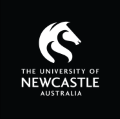
How to write an essay: Introduction
- What's in this guide
- Introduction
- Essay structure
- Additional resources
The Introduction
An in troduction generally does three things. The first part is usually a general comment that shows the reader why the topic is important, gets their interest, and leads them into the topic. It isn’t actually part of your argument. The next part of the introduction is the thesis statement . This is your response to the question; your final answer. It is probably the most important part of the introduction. Finally, the introduction tells the reader what they can expect in the essay body. This is where you briefly outline your arguments .
Here is an example of the introduction to the question - Discuss how media can influence children. Use specific examples to support your view.
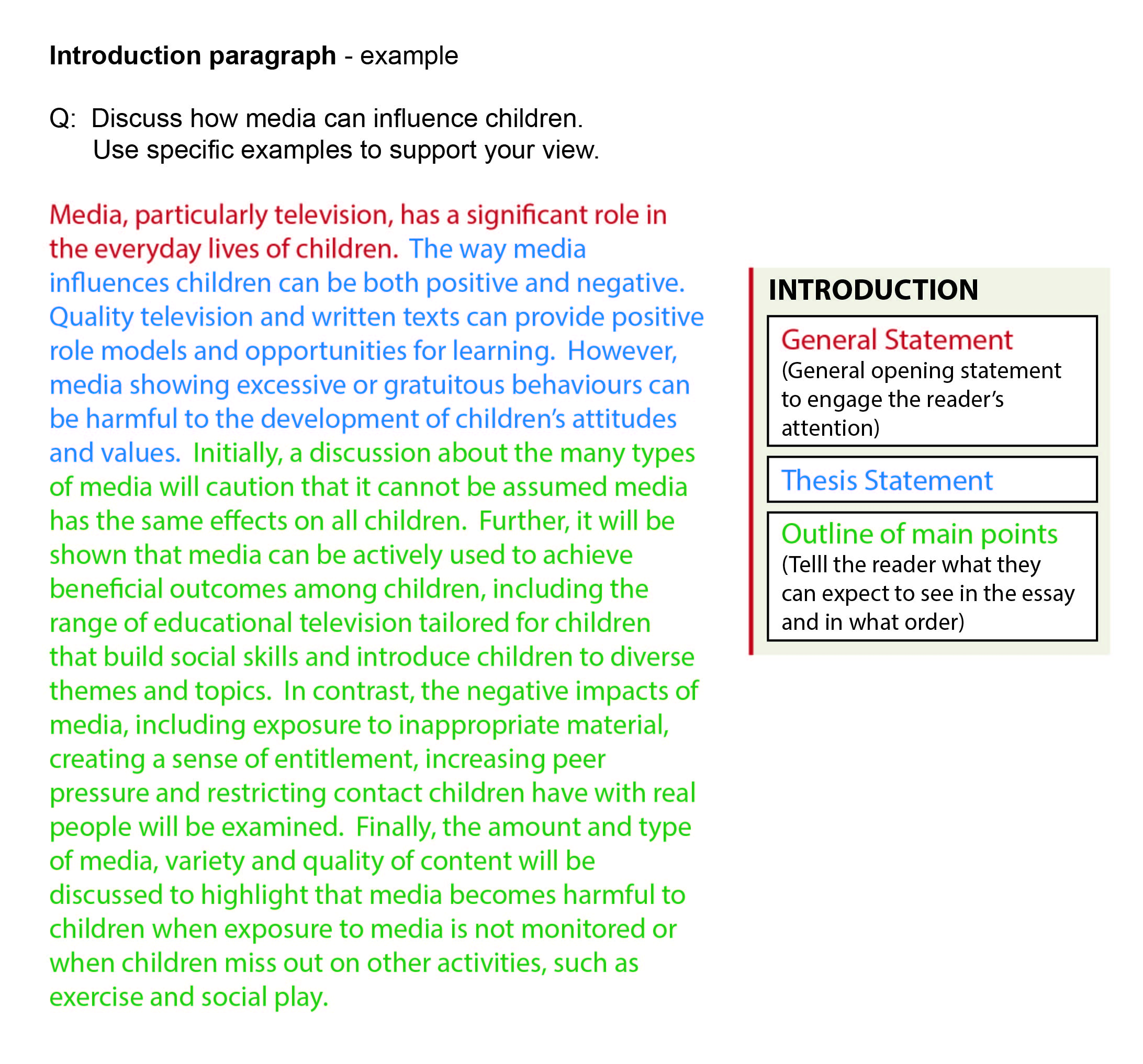
Pathways and Academic Learning Support
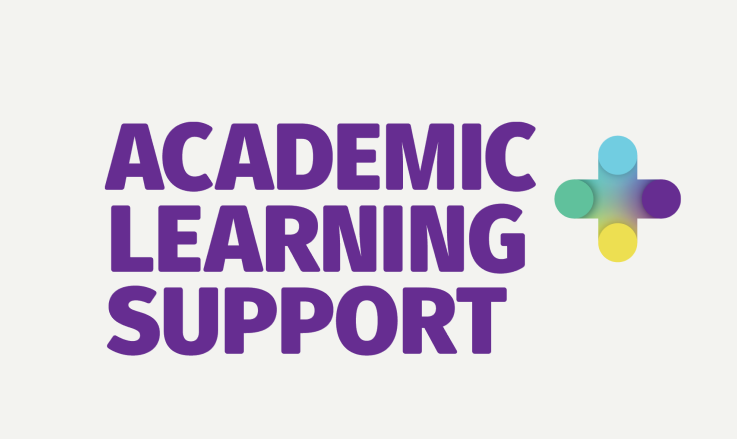
- << Previous: Essay structure
- Next: Body >>
- Last Updated: Nov 29, 2023 1:55 PM
- URL: https://libguides.newcastle.edu.au/how-to-write-an-essay
- PRO Courses Guides New Tech Help Pro Expert Videos About wikiHow Pro Upgrade Sign In
- EDIT Edit this Article
- EXPLORE Tech Help Pro About Us Random Article Quizzes Request a New Article Community Dashboard This Or That Game Popular Categories Arts and Entertainment Artwork Books Movies Computers and Electronics Computers Phone Skills Technology Hacks Health Men's Health Mental Health Women's Health Relationships Dating Love Relationship Issues Hobbies and Crafts Crafts Drawing Games Education & Communication Communication Skills Personal Development Studying Personal Care and Style Fashion Hair Care Personal Hygiene Youth Personal Care School Stuff Dating All Categories Arts and Entertainment Finance and Business Home and Garden Relationship Quizzes Cars & Other Vehicles Food and Entertaining Personal Care and Style Sports and Fitness Computers and Electronics Health Pets and Animals Travel Education & Communication Hobbies and Crafts Philosophy and Religion Work World Family Life Holidays and Traditions Relationships Youth
- Browse Articles
- Learn Something New
- Quizzes Hot
- This Or That Game New
- Train Your Brain
- Explore More
- Support wikiHow
- About wikiHow
- Log in / Sign up
- Education and Communications
- College University and Postgraduate
- Academic Writing
How to Write an Essay Introduction
Last Updated: January 15, 2024 Fact Checked
This article was co-authored by Jake Adams and by wikiHow staff writer, Jennifer Mueller, JD . Jake Adams is an academic tutor and the owner of Simplifi EDU, a Santa Monica, California based online tutoring business offering learning resources and online tutors for academic subjects K-College, SAT & ACT prep, and college admissions applications. With over 14 years of professional tutoring experience, Jake is dedicated to providing his clients the very best online tutoring experience and access to a network of excellent undergraduate and graduate-level tutors from top colleges all over the nation. Jake holds a BS in International Business and Marketing from Pepperdine University. There are 12 references cited in this article, which can be found at the bottom of the page. This article has been fact-checked, ensuring the accuracy of any cited facts and confirming the authority of its sources. This article has been viewed 4,230,271 times.
The introduction of your essay serves two important purposes. First, it gets your reader interested in the topic and encourages them to read what you have to say about it. Second, it gives your reader a roadmap of what you're going to say and the overarching point you're going to make – your thesis statement. A powerful introduction grabs your reader's attention and keeps them reading.
Sample Essay Hooks & Introductions

Hooking Your Reader

- If you're writing a paper for a class, don't automatically assume your instructor is your audience. If you write directly to your instructor, you'll end up glossing over some information that is necessary to show that you properly understand the subject of your essay.
- It can be helpful to reverse-engineer your audience based on the subject matter of your essay. For example, if you're writing an essay about a women's health issue for a women's studies class, you might identify your audience as young women within the age range most affected by the issue.

- For this hook to be effective, your fact needs to be sufficiently surprising. If you're not sure, test it on a few friends. If they react by expressing shock or surprise, you know you've got something good.
- Use a fact or statistic that sets up your essay, not something you'll be using as evidence to prove your thesis statement. Facts or statistics that demonstrate why your topic is important (or should be important) to your audience typically make good hooks.

- For example, if you were writing an essay proposing a change to drunk driving laws, you might open with a story of how the life of a victim was changed forever after they were hit by a drunk driver.

- For example, if you're writing an essay about a public figure, you might include an anecdote about an odd personal habit that cleverly relates back to your thesis statement.
- Particularly with less formal papers or personal essays, humorous anecdotes can be particularly effective hooks.

- For example: "What would you do if you could play God for a day? That's exactly what the leaders of the tiny island nation of Guam tried to answer."
- If your essay prompt was a question, don't just repeat it in your paper. Make sure to come up with your own intriguing question.

- Broad, sweeping generalizations may ring false with some readers and alienate them from the start. For example, "everyone wants someone to love" would alienate someone who identified as aromantic or asexual.
Creating Your Context

- Use an appropriate transitional word or phrase, such as "however" or "similarly," to move from your specific anecdote back out to a broader scope.
- For example, if you related a story about one individual, but your essay isn't about them, you can relate the hook back to the larger topic with a sentence like "Tommy wasn't alone, however. There were more than 200,000 dockworkers affected by that union strike."

- For example, if your thesis relates to how blackface was used as a means of enforcing racial segregation, your introduction would describe what blackface performances were, and where and when they occurred.
- If you are writing an argumentative paper, make sure to explain both sides of the argument in a neutral or objective manner.

- Definitions would be particularly important if your essay is discussing a scientific topic, where some scientific terminology might not be understood by the average layperson.
- Definitions also come in handy in legal or political essays, where a term may have different meanings depending on the context in which they are used.

- If you're using 2 or 3 sentences to describe the context for your thesis, try to make each sentence a bit more specific than the one before it. Draw your reader in gradually.
- For example, if you're writing an essay about drunk driving fatalities, you might start with an anecdote about a particular victim. Then you could provide national statistics, then narrow it down further to statistics for a particular gender or age group.
Presenting Your Thesis

- For example, a thesis for an essay on blackface performance might be "Because of its humiliating and demoralizing effect on African American slaves, blackface was used less as a comedy routine and more as a way of enforcing racial segregation."
- Be assertive and confident in your writing. Avoid including fluff such as "In this essay, I will attempt to show...." Instead, dive right in and make your claim, bold and proud.
- Your outline should be specific, unique, and provable. Through your essay, you'll make points that will show that your thesis statement is true – or at least persuade your readers that it's most likely true.

- If you've created an outline for your essay, this sentence is essentially the main subjects of each paragraph of the body of your essay.
- For example, if you're writing an essay about the unification of Italy, you might list 3 obstacles to unification. In the body of your essay, you would discuss details about how each of those obstacles was addressed or overcome.
- Instead of just listing all of your supporting points, sum them up by stating "how" or "why" your thesis is true. For example, instead of saying, "Phones should be banned from classrooms because they distract students, promote cheating, and make too much noise," you might say "Phones should be banned from classrooms because they act as an obstacle to learning."

- To figure out if you need a transition sentence, read the introduction and the first paragraph out loud. If you find yourself pausing or stumbling between the paragraphs, work in a transition to make the move smoother.
- You can also have friends or family members read your easy. If they feel it's choppy or jumps from the introduction into the essay, see what you can do to smooth it out.
Bringing It All Together

- If you're writing your essay for a class assignment, ask your instructor for examples of well-written essays that you can look at. Take note of conventions that are commonly used by writers in that discipline.
- Make a brief outline of the essay based on the information presented in the introduction. Then look at that outline as you read the essay to see how the essay follows it to prove the writer's thesis statement.

- For shorter essays under 1,000 words, keep your introduction to 1 paragraph, between 100 and 200 words.
- Always follow your instructor's guidelines for length. These rules can vary at times based on genre or form of writing.

- As you write your essay, you may want to jot down things you want to include in your introduction. For example, you may realize that you're using a particular term that you need to define in your introduction.

- Delete any filler or unnecessary language. Given the shortness of the introduction, every sentence should be essential to your reader's understanding of your essay.

- The first sentence or two should be your hook, designed to grab your reader's attention and get them interested in reading your essay.
- The next couple of sentences create a bridge between your hook and the overall topic of the rest of your essay.
- End your introduction with your thesis statement and a list of the points you will make in your essay to support or prove your thesis statement.
Expert Q&A

- If you are answering or responding to an assigned question, make sure you've interpreted the question correctly. The quality of your writing is irrelevant if your essay doesn't answer the question. Thanks Helpful 7 Not Helpful 1
- Have friends or family members read your essay and provide you with feedback. If you're writing for a class, you might want to exchange essays with another classmate and give each other feedback on your work. Thanks Helpful 3 Not Helpful 1

You Might Also Like

- ↑ https://writingcenter.unc.edu/tips-and-tools/audience/
- ↑ http://advice.writing.utoronto.ca/planning/intros-and-conclusions/
- ↑ https://www.grammarly.com/blog/how-to-write-an-introduction/
- ↑ https://www.esu.edu/writing-studio/guides/hook.cfm
- ↑ https://writingcenter.unc.edu/tips-and-tools/introductions/
- ↑ https://writingcenter.unc.edu/tips-and-tools/cliches/
- ↑ Jake Adams. Academic Tutor & Test Prep Specialist. Expert Interview. 20 May 2020.
- ↑ https://library.sacredheart.edu/c.php?g=29803&p=185917
- ↑ https://writingcenter.uagc.edu/introductions-conclusions
- ↑ https://lsa.umich.edu/sweetland/undergraduates/writing-guides/how-do-i-write-an-intro--conclusion----body-paragraph.html
- ↑ https://writingcenter.unc.edu/tips-and-tools/transitions/
- ↑ https://advice.writing.utoronto.ca/planning/intros-and-conclusions/
About This Article

Start your introduction with a relevant story, fact, or quote that will engage readers. Then, add 2-3 sentences of background information to give your essay context, and include important dates, locations, or historical moments where applicable. Finally, include your thesis statement, which is a specific, arguable, and provable statement that answers a question about your essay topic. For example, your thesis might read: "In the modern age, online dating apps like Tinder provide a wider variety of romantic options than young people have ever had before." For more tips and examples on how to craft your thesis and put your introduction together, read on! Did this summary help you? Yes No
- Send fan mail to authors
Reader Success Stories
Dec 11, 2016
Did this article help you?

Jul 11, 2020
Teighan Vickrey
Mar 18, 2018
Apr 27, 2017
Arturo Rueda
Mar 21, 2016

Featured Articles

Trending Articles

Watch Articles

- Terms of Use
- Privacy Policy
- Do Not Sell or Share My Info
- Not Selling Info
Get all the best how-tos!
Sign up for wikiHow's weekly email newsletter
Essay Introduction Examples
#scribendiinc
Written by Scribendi
Always have a road map for an essay introduction . Having a strong essay introduction structure is critical to a successful paper. It sets the tone for the reader and interests them in your work. It also tells them what the essay is about and why they should read it at all.
It shouldn't leave the reader confused with a cliffhanger at the end. Instead, it should generate interest and guide the reader to Chapter One. Using the right parts of an essay introduction can help with this.
Check out an effective essay introduction structure below. It’s a road map for writing an essay—just like the parts of essay introductions are road maps for readers.
Essay Introduction Structure
Attention-grabbing start
Outline of argument
Thesis statement
Some academics find the beginning the most difficult part of writing an essay , so our editors have created some examples of good essay introductions to guide you. Let's take a look at the samples below to see how the essay introduction structures come together.
If you are unsure about your paper, our essay editors would love to give you some feedback on how to write an essay introduction.
[1] According to Paul Ratsmith, the tenuous but nonetheless important relationship between pumpkins and rats is little understood: "While I've always been fascinated by this natural kinship, the connection between pumpkins and rats has been the subject of few, if any, other studies" (2008). [2] Ratsmith has been studying this connection, something he coined "pumpkinology," since the early 1990s. He is most well known for documenting the three years he spent living in the wild among pumpkins and rats. [3] Though it is a topic of little recent interest, the relationship has been noted in several ancient texts and seems to have been well understood by the Romans. Critics of Ratsmith have cited poor science and questionable methodology when dismissing his results, going so far as to call pumpkinology "rubbish" (de Vil, 2009), "stupid" (Claw, 2010), and "quite possibly made up" (Igthorn, 2009). [4] Despite these criticisms, there does appear to be a strong correlation between pumpkin patches and rat populations, with Ratsmith documenting numerous pumpkin–rat colonies across North America, leading to the conclusion that pumpkins and rats are indeed "nature's best friends" (2008).
Let's break down this example of a good essay introduction structure. The beginning hooks our attention from the get-go in section one. This is because it piques our curiosity. What is this strange relationship? Why has no one studied it? Then, section two gives us context for the topic. Ratsmith is an expert in a controversial field: pumpkinology. It's the study of the connection between pumpkins and rats.
The second half of the paragraph also demonstrates why this is a good essay introduction example. Section three gives us the main argument: the topic is rarely studied because critics think Ratsmith's work is "rubbish," but the relationship between pumpkins and rats has ancient roots. Then section four gives us the thesis statement: Ratsmith's work has some merit.
The parts of an essay introduction help us chart a course through the topic. We know the paper will take us on a journey. It's all because the author practiced how to write an essay introduction.
Let’s take a look at another example of a good essay introduction.
[1] Societies have long believed that if a black cat crosses one's path, one might have bad luck—but it wasn't until King Charles I's black cat died that the ruler's bad luck began (Pemberton, 2018). [2] Indeed, for centuries, black cats have been seen as the familiars of witches—as demonic associates of Satan who disrespect authority (Yuko, 2021). Yet, they have also been associated with good luck, from England's rulers to long-distance sailors (Cole, 2021). [3] This essay shows how outdated the bad luck superstition really is. It provides a comprehensive history of the belief and then provides proof that this superstition has no place in today's modern society. [4] It argues that despite the prevailing belief that animals cause bad luck, black cats often bring what seems to be "good luck" and deserve a new reputation.
This example of a good essay introduction pulls us in right away. This is because section one provides an interesting fact about King Charles I. What is the story there, and what bad luck did he experience after his cat passed away? Then, section two provides us with general information about the current status of black cats. We understand the context of the essay and why the topic is controversial.
Section three then gives us a road map that leads us through the main arguments. Finally, section four gives us the essay's thesis: "black cats often bring what seems to be 'good luck' and deserve a new reputation."
Still feeling unsure about how to write an essay introduction? Here's another example using the essay introduction structure we discussed earlier.
[1] When the Lutz family moved into a new house in Amityville, New York, they found themselves terrorized by a vengeful ghost (Labianca, 2021). Since then, their famous tale has been debunked by scientists and the family themselves (Smith, 2005). [2] Yet ghost stories have gripped human consciousness for centuries (History, 2009). Scientists, researchers, and theorists alike have argued whether ghosts are simply figments of the imagination or real things that go bump in the night. In considering this question, many scientists have stated that ghosts may actually exist. [3] Lindley (2017) believes the answer may be in the quantum world, which "just doesn’t work the way the world around us works," but "we don’t really have the concepts to deal with it." Scientific studies on the existence of ghosts date back hundreds of years (History, 2009), and technology has undergone a vast evolution since then (Lamey, 2018). State-of-the-art tools and concepts can now reveal more about ghosts than we've ever known (Kane, 2015). [4] This essay uses these tools to provide definitive proof of the existence of ghosts in the quantum realm.
This example of a good essay introduction uses a slightly different strategy than the others. To hook the reader, it begins with an interesting anecdote related to the topic. That pulls us in, making us wonder what really happened to the Lutzs. Then, section two provides us with some background information about the topic to help us understand. Many people believe ghosts aren't real, but some scientists think they are.
This immediately flows into section three, which charts a course through the main arguments the essay will make. Finally, it ends with the essay's thesis: there is definitive proof of the existence of ghosts in the quantum realm. It all works because the author used the parts of an essay introduction well.
For attention-grabbing introductions, an understanding of essay introduction structure and how to write an essay introduction is required.
Our essay introduction examples showing the parts of an essay introduction will help you craft the beginning paragraph you need to start your writing journey on the right foot.
If you'd like more personalized attention to your essay, consider sending it for Essay Editing by Scribendi. We can help you ensure that your essay starts off strong.
Image source: Prostock-studio/Elements.envato.com
Let’s Get Your Essay Ready to Wow an Audience
Hire one of our expert editors , or get a free sample, about the author.

Scribendi's in-house editors work with writers from all over the globe to perfect their writing. They know that no piece of writing is complete without a professional edit, and they love to see a good piece of writing transformed into a great one. Scribendi's in-house editors are unrivaled in both experience and education, having collectively edited millions of words and obtained numerous degrees. They love consuming caffeinated beverages, reading books of various genres, and relaxing in quiet, dimly lit spaces.
Have You Read?
"The Complete Beginner's Guide to Academic Writing"
Related Posts
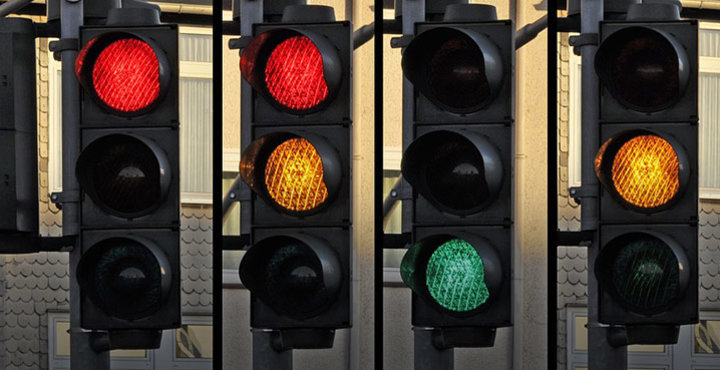
Essay Writing: Traffic Signals for the Reader
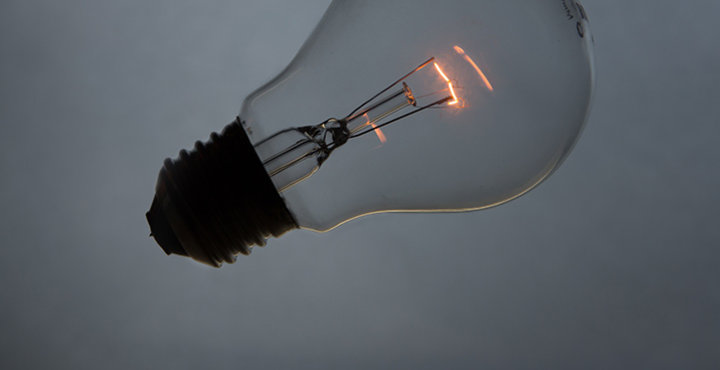
How to Write a Great Thesis Statement

How to Write a Persuasive Essay

MLA Formatting and MLA Style: An Introduction
Upload your file(s) so we can calculate your word count, or enter your word count manually.
We will also recommend a service based on the file(s) you upload.
English is not my first language. I need English editing and proofreading so that I sound like a native speaker.
I need to have my journal article, dissertation, or term paper edited and proofread, or I need help with an admissions essay or proposal.
I have a novel, manuscript, play, or ebook. I need editing, copy editing, proofreading, a critique of my work, or a query package.
I need editing and proofreading for my white papers, reports, manuals, press releases, marketing materials, and other business documents.
I need to have my essay, project, assignment, or term paper edited and proofread.
I want to sound professional and to get hired. I have a resume, letter, email, or personal document that I need to have edited and proofread.
Prices include your personal % discount.
Prices include % sales tax ( ).


Choose Your Test
Sat / act prep online guides and tips, how to write an introduction paragraph in 3 steps.
General Education
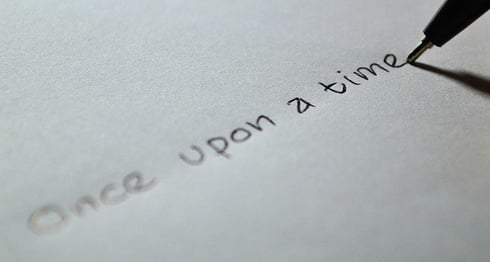
It’s the roadmap to your essay, it’s the forecast for your argument, it’s...your introduction paragraph, and writing one can feel pretty intimidating. The introduction paragraph is a part of just about every kind of academic writing , from persuasive essays to research papers. But that doesn’t mean writing one is easy!
If trying to write an intro paragraph makes you feel like a Muggle trying to do magic, trust us: you aren’t alone. But there are some tips and tricks that can make the process easier—and that’s where we come in.
In this article, we’re going to explain how to write a captivating intro paragraph by covering the following info:
- A discussion of what an introduction paragraph is and its purpose in an essay
- An overview of the most effective introduction paragraph format, with explanations of the three main parts of an intro paragraph
- An analysis of real intro paragraph examples, with a discussion of what works and what doesn’t
- A list of four top tips on how to write an introduction paragraph
Are you ready? Let’s begin!

What Is an Introduction Paragraph?
An introduction paragraph is the first paragraph of an essay , paper, or other type of academic writing. Argumentative essays , book reports, research papers, and even personal essays are common types of writing that require an introduction paragraph. Whether you’re writing a research paper for a science course or an argumentative essay for English class , you’re going to have to write an intro paragraph.
So what’s the purpose of an intro paragraph? As a reader’s first impression of your essay, the intro paragraph should introduce the topic of your paper.
Your introduction will also state any claims, questions, or issues that your paper will focus on. This is commonly known as your paper’s thesis . This condenses the overall point of your paper into one or two short sentences that your reader can come back and reference later.
But intro paragraphs need to do a bit more than just introduce your topic. An intro paragraph is also supposed to grab your reader’s attention. The intro paragraph is your chance to provide just enough info and intrigue to make your reader say, “Hey, this topic sounds interesting. I think I’ll keep reading this essay!” That can help your essay stand out from the crowd.
In most cases, an intro paragraph will be relatively short. A good intro will be clear, brief, purposeful, and focused. While there are some exceptions to this rule, it’s common for intro paragraphs to consist of three to five sentences .
Effectively introducing your essay’s topic, purpose, and getting your reader invested in your essay sounds like a lot to ask from one little paragraph, huh? In the next section, we’ll demystify the intro paragraph format by breaking it down into its core parts . When you learn how to approach each part of an intro, writing one won’t seem so scary!

Once you figure out the three parts of an intro paragraph, writing one will be a piece of cake!
The 3 Main Parts of an Intro Paragraph
In general, an intro paragraph is going to have three main parts: a hook, context, and a thesis statement . Each of these pieces of the intro plays a key role in acquainting the reader with the topic and purpose of your essay.
Below, we’ll explain how to start an introduction paragraph by writing an effective hook, providing context, and crafting a thesis statement. When you put these elements together, you’ll have an intro paragraph that does a great job of making a great first impression on your audience!
Intro Paragraph Part 1: The Hook
When it comes to how to start an introduction paragraph, o ne of the most common approaches is to start with something called a hook.
What does hook mean here, though? Think of it this way: it’s like when you start a new Netflix series: you look up a few hours (and a few episodes) later and you say, “Whoa. I guess I must be hooked on this show!”
That’s how the hook is supposed to work in an intro paragrap h: it should get your reader interested enough that they don’t want to press the proverbial “pause” button while they’re reading it . In other words, a hook is designed to grab your reader’s attention and keep them reading your essay!
This means that the hook comes first in the intro paragraph format—it’ll be the opening sentence of your intro.
It’s important to realize that there are many different ways to write a good hook. But generally speaking, hooks must include these two things: what your topic is, and the angle you’re taking on that topic in your essay.
One approach to writing a hook that works is starting with a general, but interesting, statement on your topic. In this type of hook, you’re trying to provide a broad introduction to your topic and your angle on the topic in an engaging way .
For example, if you’re writing an essay about the role of the government in the American healthcare system, your hook might look something like this:
There's a growing movement to require that the federal government provide affordable, effective healthcare for all Americans.
This hook introduces the essay topic in a broad way (government and healthcare) by presenting a general statement on the topic. But the assumption presented in the hook can also be seen as controversial, which gets readers interested in learning more about what the writer—and the essay—has to say.
In other words, the statement above fulfills the goals of a good hook: it’s intriguing and provides a general introduction to the essay topic.
Intro Paragraph Part 2: Context
Once you’ve provided an attention-grabbing hook, you’ll want to give more context about your essay topic. Context refers to additional details that reveal the specific focus of your paper. So, whereas the hook provides a general introduction to your topic, context starts helping readers understand what exactly you’re going to be writing about
You can include anywhere from one to several sentences of context in your intro, depending on your teacher’s expectations, the length of your paper, and complexity of your topic. In these context-providing sentences, you want to begin narrowing the focus of your intro. You can do this by describing a specific issue or question about your topic that you’ll address in your essay. It also helps readers start to understand why the topic you’re writing about matters and why they should read about it.
So, what counts as context for an intro paragraph? Context can be any important details or descriptions that provide background on existing perspectives, common cultural attitudes, or a specific situation or controversy relating to your essay topic. The context you include should acquaint your reader with the issues, questions, or events that motivated you to write an essay on your topic...and that your reader should know in order to understand your thesis.
For instance, if you’re writing an essay analyzing the consequences of sexism in Hollywood, the context you include after your hook might make reference to the #metoo and #timesup movements that have generated public support for victims of sexual harassment.
The key takeaway here is that context establishes why you’re addressing your topic and what makes it important. It also sets you up for success on the final piece of an intro paragraph: the thesis statement.
Elle Woods' statement offers a specific point of view on the topic of murder...which means it could serve as a pretty decent thesis statement!
Intro Paragraph Part 3: The Thesis
The final key part of how to write an intro paragraph is the thesis statement. The thesis statement is the backbone of your introduction: it conveys your argument or point of view on your topic in a clear, concise, and compelling way . The thesis is usually the last sentence of your intro paragraph.
Whether it’s making a claim, outlining key points, or stating a hypothesis, your thesis statement will tell your reader exactly what idea(s) are going to be addressed in your essay. A good thesis statement will be clear, straightforward, and highlight the overall point you’re trying to make.
Some instructors also ask students to include an essay map as part of their thesis. An essay map is a section that outlines the major topics a paper will address. So for instance, say you’re writing a paper that argues for the importance of public transport in rural communities. Your thesis and essay map might look like this:
Having public transport in rural communities helps people improve their economic situation by giving them reliable transportation to their job, reducing the amount of money they spend on gas, and providing new and unionized work .
The underlined section is the essay map because it touches on the three big things the writer will talk about later. It literally maps out the rest of the essay!
So let’s review: Your thesis takes the idea you’ve introduced in your hook and context and wraps it up. Think of it like a television episode: the hook sets the scene by presenting a general statement and/or interesting idea that sucks you in. The context advances the plot by describing the topic in more detail and helping readers understand why the topic is important. And finally, the thesis statement provides the climax by telling the reader what you have to say about the topic.
The thesis statement is the most important part of the intro. Without it, your reader won’t know what the purpose of your essay is! And for a piece of writing to be effective, it needs to have a clear purpose. Your thesis statement conveys that purpose , so it’s important to put careful thought into writing a clear and compelling thesis statement.
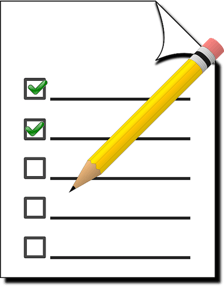
How To Write an Introduction Paragraph: Example and Analysis
Now that we’ve provided an intro paragraph outline and have explained the three key parts of an intro paragraph, let’s take a look at an intro paragraph in action.
To show you how an intro paragraph works, we’ve included a sample introduction paragraph below, followed by an analysis of its strengths and weaknesses.
Example of Introduction Paragraph
While college students in the U.S. are struggling with how to pay for college, there is another surprising demographic that’s affected by the pressure to pay for college: families and parents. In the face of tuition price tags that total more than $100,000 (as a low estimate), families must make difficult decisions about how to save for their children’s college education. Charting a feasible path to saving for college is further complicated by the FAFSA’s estimates for an “Expected Family Contribution”—an amount of money that is rarely feasible for most American families. Due to these challenging financial circumstances and cultural pressure to give one’s children the best possible chance of success in adulthood, many families are going into serious debt to pay for their children’s college education. The U.S. government should move toward bearing more of the financial burden of college education.
Example of Introduction Paragraph: Analysis
Before we dive into analyzing the strengths and weaknesses of this example intro paragraph, let’s establish the essay topic. The sample intro indicates that t he essay topic will focus on one specific issue: who should cover the cost of college education in the U.S., and why. Both the hook and the context help us identify the topic, while the thesis in the last sentence tells us why this topic matters to the writer—they think the U.S. Government needs to help finance college education. This is also the writer’s argument, which they’ll cover in the body of their essay.
Now that we’ve identified the essay topic presented in the sample intro, let’s dig into some analysis. To pin down its strengths and weaknesses, we’re going to use the following three questions to guide our example of introduction paragraph analysis:
- Does this intro provide an attention-grabbing opening sentence that conveys the essay topic?
- Does this intro provide relevant, engaging context about the essay topic?
- Does this intro provide a thesis statement that establishes the writer’s point of view on the topic and what specific aspects of the issue the essay will address?
Now, let’s use the questions above to analyze the strengths and weaknesses of this sample intro paragraph.
Does the Intro Have a Good Hook?
First, the intro starts out with an attention-grabbing hook . The writer starts by presenting an assumption (that the U.S. federal government bears most of the financial burden of college education), which makes the topic relatable to a wide audience of readers. Also note that the hook relates to the general topic of the essay, which is the high cost of college education.
The hook then takes a surprising turn by presenting a counterclaim : that American families, rather than students, feel the true burden of paying for college. Some readers will have a strong emotional reaction to this provocative counterclaim, which will make them want to keep reading! As such, this intro provides an effective opening sentence that conveys the essay topic.
Does the Intro Give Context?
T he second, third, and fourth sentences of the intro provide contextual details that reveal the specific focus of the writer’s paper . Remember: the context helps readers start to zoom in on what the paper will focus on, and what aspect of the general topic (college costs) will be discussed later on.
The context in this intro reveals the intent and direction of the paper by explaining why the issue of families financing college is important. In other words, the context helps readers understand why this issue matters , and what aspects of this issue will be addressed in the paper.
To provide effective context, the writer refers to issues (the exorbitant cost of college and high levels of family debt) that have received a lot of recent scholarly and media attention. These sentences of context also elaborate on the interesting perspective included in the hook: that American families are most affected by college costs.
Does the Intro Have a Thesis?
Finally, this intro provides a thesis statement that conveys the writer’s point of view on the issue of financing college education. This writer believes that the U.S. government should do more to pay for students’ college educations.
However, the thesis statement doesn’t give us any details about why the writer has made this claim or why this will help American families . There isn’t an essay map that helps readers understand what points the writer will make in the essay.
To revise this thesis statement so that it establishes the specific aspects of the topic that the essay will address, the writer could add the following to the beginning of the thesis statement:
The U.S. government should take on more of the financial burden of college education because other countries have shown this can improve education rates while reducing levels of familial poverty.
Check out the new section in bold. Not only does it clarify that the writer is talking about the pressure put on families, it touches on the big topics the writer will address in the paper: improving education rates and reduction of poverty. So not only do we have a clearer argumentative statement in this thesis, we also have an essay map!
So, let’s recap our analysis. This sample intro paragraph does an effective job of providing an engaging hook and relatable, interesting context, but the thesis statement needs some work ! As you write your own intro paragraphs, you might consider using the questions above to evaluate and revise your work. Doing this will help ensure you’ve covered all of your bases and written an intro that your readers will find interesting!
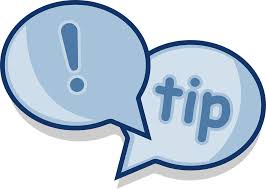
4 Tips for How To Write an Introduction Paragraph
Now that we’ve gone over an example of introduction paragraph analysis, let’s talk about how to write an introduction paragraph of your own. Keep reading for four tips for writing a successful intro paragraph for any essay.

Tip 1: Analyze Your Essay Prompt
If you’re having trouble with how to start an introduction paragraph, analyze your essay prompt! Most teachers give you some kind of assignment sheet, formal instructions, or prompt to set the expectations for an essay they’ve assigned, right? Those instructions can help guide you as you write your intro paragraph!
Because they’ll be reading and responding to your essay, you want to make sure you meet your teacher’s expectations for an intro paragraph . For instance, if they’ve provided specific instructions about how long the intro should be or where the thesis statement should be located, be sure to follow them!
The type of paper you’re writing can give you clues as to how to approach your intro as well. If you’re writing a research paper, your professor might expect you to provide a research question or state a hypothesis in your intro. If you’re writing an argumentative essay, you’ll need to make sure your intro overviews the context surrounding your argument and your thesis statement includes a clear, defensible claim.
Using the parameters set out by your instructor and assignment sheet can put some easy-to-follow boundaries in place for things like your intro’s length, structure, and content. Following these guidelines can free you up to focus on other aspects of your intro... like coming up with an exciting hook and conveying your point of view on your topic!
Tip 2: Narrow Your Topic
You can’t write an intro paragraph without first identifying your topic. To make your intro as effective as possible, you need to define the parameters of your topic clearly—and you need to be specific.
For example, let’s say you want to write about college football. “NCAA football” is too broad of a topic for a paper. There is a lot to talk about in terms of college football! It would be tough to write an intro paragraph that’s focused, purposeful, and engaging on this topic. In fact, if you did try to address this whole topic, you’d probably end up writing a book!
Instead, you should narrow broad topics to identify a specific question, claim, or issue pertaining to some aspect of NCAA football for your intro to be effective. So, for instance, you could frame your topic as, “How can college professors better support NCAA football players in academics?” This focused topic pertaining to NCAA football would give you a more manageable angle to discuss in your paper.
So before you think about writing your intro, ask yourself: Is my essay topic specific, focused, and logical? Does it convey an issue or question that I can explore over the course of several pages? Once you’ve established a good topic, you’ll have the foundation you need to write an effective intro paragraph .

Once you've figured out your topic, it's time to hit the books!
Tip 3: Do Your Research
This tip is tightly intertwined with the one above, and it’s crucial to writing a good intro: do your research! And, guess what? This tip applies to all papers—even ones that aren’t technically research papers.
Here’s why you need to do some research: getting the lay of the land on what others have said about your topic—whether that’s scholars and researchers or the mass media— will help you narrow your topic, write an engaging hook, and provide relatable context.
You don't want to sit down to write your intro without a solid understanding of the different perspectives on your topic. Whether those are the perspectives of experts or the general public, these points of view will help you write your intro in a way that is intriguing and compelling for your audience of readers.
Tip 4: Write Multiple Drafts
Some say to write your intro first; others say write it last. The truth is, there isn’t a right or wrong time to write your intro—but you do need to have enough time to write multiple drafts .
Oftentimes, your professor will ask you to write multiple drafts of your paper, which gives you a built-in way to make sure you revise your intro. Another approach you could take is to write out a rough draft of your intro before you begin writing your essay, then revise it multiple times as you draft out your paper.
Here’s why this approach can work: as you write your paper, you’ll probably come up with new insights on your topic that you didn’t have right from the start. You can use these “light bulb” moments to reevaluate your intro and make revisions that keep it in line with your developing essay draft.
Once you’ve written your entire essay, consider going back and revising your intro again . You can ask yourself these questions as you evaluate your intro:
- Is my hook still relevant to the way I’ve approached the topic in my essay?
- Do I provide enough appropriate context to introduce my essay?
- Now that my essay is written, does my thesis statement still accurately reflect the point of view that I present in my essay?
Using these questions as a guide and putting your intro through multiple revisions will help ensure that you’ve written the best intro for the final draft of your essay. Also, revising your writing is always a good thing to do—and this applies to your intro, too!

What's Next?
Your college essays also need great intro paragraphs. Here’s a guide that focuses on how to write the perfect intro for your admissions essays.
Of course, the intro is just one part of your college essay . This article will teach you how to write a college essay that makes admissions counselors sit up and take notice.
Are you trying to write an analytical essay? Our step-by-step guide can help you knock it out of the park.

Ashley Sufflé Robinson has a Ph.D. in 19th Century English Literature. As a content writer for PrepScholar, Ashley is passionate about giving college-bound students the in-depth information they need to get into the school of their dreams.
Student and Parent Forum
Our new student and parent forum, at ExpertHub.PrepScholar.com , allow you to interact with your peers and the PrepScholar staff. See how other students and parents are navigating high school, college, and the college admissions process. Ask questions; get answers.

Ask a Question Below
Have any questions about this article or other topics? Ask below and we'll reply!
Improve With Our Famous Guides
- For All Students
The 5 Strategies You Must Be Using to Improve 160+ SAT Points
How to Get a Perfect 1600, by a Perfect Scorer
Series: How to Get 800 on Each SAT Section:
Score 800 on SAT Math
Score 800 on SAT Reading
Score 800 on SAT Writing
Series: How to Get to 600 on Each SAT Section:
Score 600 on SAT Math
Score 600 on SAT Reading
Score 600 on SAT Writing
Free Complete Official SAT Practice Tests
What SAT Target Score Should You Be Aiming For?
15 Strategies to Improve Your SAT Essay
The 5 Strategies You Must Be Using to Improve 4+ ACT Points
How to Get a Perfect 36 ACT, by a Perfect Scorer
Series: How to Get 36 on Each ACT Section:
36 on ACT English
36 on ACT Math
36 on ACT Reading
36 on ACT Science
Series: How to Get to 24 on Each ACT Section:
24 on ACT English
24 on ACT Math
24 on ACT Reading
24 on ACT Science
What ACT target score should you be aiming for?
ACT Vocabulary You Must Know
ACT Writing: 15 Tips to Raise Your Essay Score
How to Get Into Harvard and the Ivy League
How to Get a Perfect 4.0 GPA
How to Write an Amazing College Essay
What Exactly Are Colleges Looking For?
Is the ACT easier than the SAT? A Comprehensive Guide
Should you retake your SAT or ACT?
When should you take the SAT or ACT?
Stay Informed
Get the latest articles and test prep tips!
Looking for Graduate School Test Prep?
Check out our top-rated graduate blogs here:
GRE Online Prep Blog
GMAT Online Prep Blog
TOEFL Online Prep Blog
Holly R. "I am absolutely overjoyed and cannot thank you enough for helping me!”
Ultimate Guide to Writing Your College Essay
Tips for writing an effective college essay.
College admissions essays are an important part of your college application and gives you the chance to show colleges and universities your character and experiences. This guide will give you tips to write an effective college essay.
Want free help with your college essay?
UPchieve connects you with knowledgeable and friendly college advisors—online, 24/7, and completely free. Get 1:1 help brainstorming topics, outlining your essay, revising a draft, or editing grammar.
Writing a strong college admissions essay
Learn about the elements of a solid admissions essay.
Avoiding common admissions essay mistakes
Learn some of the most common mistakes made on college essays
Brainstorming tips for your college essay
Stuck on what to write your college essay about? Here are some exercises to help you get started.
How formal should the tone of your college essay be?
Learn how formal your college essay should be and get tips on how to bring out your natural voice.
Taking your college essay to the next level
Hear an admissions expert discuss the appropriate level of depth necessary in your college essay.
Student Stories
Student Story: Admissions essay about a formative experience
Get the perspective of a current college student on how he approached the admissions essay.
Student Story: Admissions essay about personal identity
Get the perspective of a current college student on how she approached the admissions essay.
Student Story: Admissions essay about community impact
Student story: admissions essay about a past mistake, how to write a college application essay, tips for writing an effective application essay, sample college essay 1 with feedback, sample college essay 2 with feedback.
This content is licensed by Khan Academy and is available for free at www.khanacademy.org.
Essay Writing Service Online: Get Help 24/7
Essay Service Rating
Your rate is:
Why you never make college essay like a pro
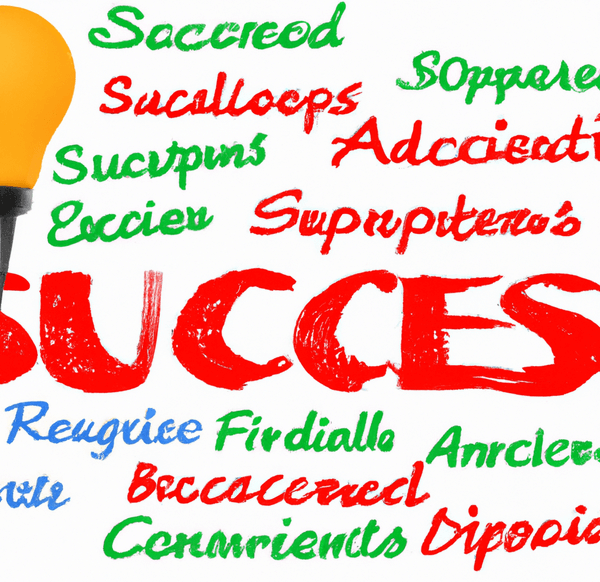
Steps to a winning piece of writing
So, what should you after you create a file and name it? Go online and type “write my essay” in a search bar. Start scrolling through the pages and open websites in order to find the most suitable for you.
Don’t be afraid to compare prices. After all, saving money is the same essential, as saving your time. Essay writing service shouldn’t be way too cheap (if you don’t want your paper to be written by a person without proper education). Calculate the average cost per page, before making the order.
How cheap essay writing service should be? It depends on the type of work and the status of college you plan to be enrolled. For example, best educational institutions of the state are in high demand, so your work should be quite outstanding to be remarkable.
Are you ready to follow the path leading to a bright future? Don’t waste another minute, type “write my essay for me” and enjoy your life!
100 Maxwell St, Boston, MA 02124,USA
I was really impressed with the essay writing service provided by this website. The quality of the essay was excellent and it was delivered on time. I would definitely recommend this service to anyone who needs help with their writing assignments.
I used this essay writing service for a research paper and I was really impressed with the quality of the work. The writer did an excellent job of researching the topic and the paper was well-written and well-organized. The only issue I had was with the price, which was a bit higher than I expected, but the quality of the work was worth it.
I was in a tight spot and needed an essay written quickly. This service was able to deliver a high-quality essay within 24 hours. The essay was well-written and free of errors. I was very impressed and would use this service again.
I was skeptical about using an essay writing service at first, but after using this one, I am a believer. The quality of the work was outstanding, and it was delivered on time. I received an A on my paper and couldn't be happier. The customer service was also top-notch. Highly recommend!
I've used several essay writing services before, but this one is by far the best. The writers are knowledgeable and skilled in their respective fields, and the customer service is exceptional. I appreciate the attention to detail and the prompt delivery of the work. The pricing is reasonable, and there are no hidden fees. I highly recommend this service to anyone in need of high-quality academic writing.
I was struggling with a difficult essay assignment and turned to this service for help. I was impressed by the professionalism of the writer assigned to me and the quality of the work produced. The writer was able to clearly and concisely articulate my ideas, and the paper was delivered on time. I received an A on the assignment and couldn't be happier. I will definitely use this service again in the future.
I was struggling with my essay until I found this amazing essay writing service. I was really impressed with the quality of the work they delivered, and the customer service was excellent. They were very responsive and made sure all of my concerns were addressed. I highly recommend this essay help service to anyone who needs assistance with their writing assignments. I am so grateful to have found this essay writer online.
I have been using essay writing services for years, and I have to say that this essay help service is one of the best I have ever come across. The writers are highly skilled and knowledgeable, and they always deliver top-quality work on time. What I really appreciate about this service is their attention to detail and their willingness to work with me to make sure I get exactly what I need. They are always responsive and professional, and they have helped me improve my writing skills immensely. If you are looking for an essay writer online, I highly recommend this service.
I was hesitant to use an essay writing service at first, but I`m so glad I did. This essay help service has exceeded all of my expectations. The writer assigned to my project was extremely professional and knowledgeable, and they delivered a high-quality essay that was perfectly tailored to my needs. What impressed me the most was their ability to complete the work within the given deadline. I will definitely be using this essay writer online again in the future.
Recently I had to write an important paper for one of my university courses. I knew this project was going to take a lot of time and effort, and I wasn`t sure I could handle it on my own. So I decided to seek help from a professional writer. After a thorough market research, I chose this service, which offered a high-quality essay writing service. I contacted their manager and told them about my requirements and deadlines. They were very professional and sociable, and were able to arrange the order very quickly and efficiently. When I received the finished work, I was pleasantly surprised by its quality and style of writing. The writer took into account all my requirements and created a work that met all my expectations. He used only up-to-date and reliable information, which was very important to me. In general, I was very satisfied with the work of this service and the result obtained. I would recommend it to anyone who is looking for help in writing important papers or essays. If you have a complex project or you want to achieve maximum results, I am sure that professional services of writers can be a great solution.
A story about how I saved my ass on the course thanks to an essay writing order :) I don`t like to write long papers at all, especially if they require careful research and analysis. Therefore, when I was given the responsibility to write an important essay on history, I immediately began to look for options on how to get rid of this problem. A friend of mine recommended this site to me, said that they would help me in writing essays and other academic papers. I didn`t really believe it at first, but I decided to try. After all, what am I missing? I left a request, the guys contacted me, and we discussed all the details of my order. I was even able to choose a writer to work on my essay. During the writing process, I was in contact with the writer and could make my own edits and requirements. When they sent me the finished work, I couldn`t believe my eyes. The work was of high quality, informative and met all my requirements. I was just blown away how they could write such a cool essay!
Bulk Content Generator
Brand Voice
AI Text Editor
Introduction Generator
Generate compelling introductions for your articles, essays, novels, and more.
AI-powered Introduction Generator
Looking for a tool that can help you generate an entire article that is coherent and contextually relevant? Try our Blog Post Generator to create ready-to-publish content that are already optimized for maximum clarity and engagement.

Your generated introduction will appear here.

Introduction
An Introduction Generator is a groundbreaking tool that helps writers in various fields - from blog posts and essays to novels and business proposals. This AI-powered technology works by creating interesting introductions specifically for your topic with just a click. You simply enter the title or subject of your content, and you'll receive a set of well-crafted introduction paragraphs.
One such powerful tool in this space is Junia AI 's Introduction Generator . Designed with the latest AI-technology, it generates high-quality introductions that not only save time but also elevate the standard of your writing.
The key benefits of using Junia AI's Introduction Generator are:
- Enhanced efficiency
- Improved quality
- Greater engagement with readers
- Increased creativity
- Boost in content traffic
The Role of Introductions in Different Types of Content
Introductions are like the front door of your content – they welcome readers in. Whether you're writing an essay, a blog post , a novel, or a business proposal, the introduction plays a crucial role in setting the tone and capturing attention.
Here's how introductions work in different types of content:
1. Essay Introductions
In essays, the introduction is where you present your main argument or thesis. It's also an opportunity to grab readers' interest with a thought-provoking question or a bold statement.
For example:
"As sea levels rise and Arctic ice melts, the evidence of global warming can no longer be ignored."
2. Blog Introductions
Blogs are all about personality and relevance. A good blog introduction often starts with a relatable story or anecdote to hook readers right from the beginning.
Here's an example:
"The moment my feet touched the cobblestone streets of Rome, I knew my adventure had truly begun."
By sharing personal experiences, you can create a connection with your audience and makes them eager to read more about your travels.
3. Novel Openings
In novels, the opening lines are like a sneak peek into the world you've created. They should spark curiosity and make readers curious about what comes next.
Here's how 'The Last Sunset' starts:
"Amelia stood at the edge of civilization, the vast desert stretching before her like an unturned page."
With this vivid description, the author paints a picture in the reader's mind and leaves them wanting to know more about Amelia and her journey.
4. Business Proposal Introductions
Business proposals need to make a strong impression right from the start. An effective introduction in this context should establish your credibility and highlight the value you can offer.
For instance:
"In today's competitive market, ABC Corp’s innovative approach to digital marketing stands out as a beacon of efficiency."
This introduction immediately grabs the attention of potential clients by addressing a pressing need or opportunity they may have.
5. Academic Research Introductions
In academic research papers, the introduction serves as a roadmap for the study. It outlines the research questions and hypotheses, providing clarity on what the paper aims to achieve.
Here's an example of how an academic introduction could begin:
"This study examines the underexplored impact of social media on language acquisition among teenagers."
By stating the specific focus of the research, the introduction sets clear expectations for readers and highlights the significance of the study.
Each example shows how introductions are tailored to different types of content, making them relevant and enticing enough to keep readers engaged.
AI-Powered Natural Language Processing: The Secret Sauce Behind High-Quality Introductions
Artificial Intelligence (AI) is the foundation of modern introduction generators like Junia AI. One of the main AI technologies driving these tools is Natural Language Processing (NLP). NLP enables software to comprehend, analyze, and produce human language in a meaningful way . It's what enables an Introduction Generator to generate introductions that are relevant to the context and interesting to readers.
How NLP Works in an Introduction Generator
When you enter your title or topic into an Introduction Generator, the NLP technology goes to work. It examines the input, grasps its meaning, and generates an introduction that fits the topic. This ensures that your introductions are not just generic paragraphs but tailored pieces designed to capture your reader’s interest right from the start.
Continuous Improvement with Machine Learning
Another layer of complexity comes with Machine Learning (ML), another part of AI. With ML algorithms, introduction generators go beyond content creation; they learn from it. These algorithms identify patterns and constantly enhance the quality of generated introductions based on real-time feedback. This means that over time, these tools become better at creating high-quality introductions that are customized to your specific requirements.
In essence, it's this combination of AI’s Natural Language Processing and Machine Learning capabilities that make introduction generators such invaluable tools for content creators. They don't just save time; they elevate the quality of your written work by ensuring each piece begins with a compelling introduction.
Advantages of Using an Introduction Generator like Junia AI
When you use an Introduction Generator like Junia AI, it offers more than just convenience. Here are the main benefits that can improve your writing process:
- Time Efficiency : As a writer or content creator, every minute counts. Junia AI's Introduction Generator quickly creates introductions, saving you valuable time. This allows you to focus more on researching, writing, and improving the main content, which is crucial for depth and detail.
- Improved Quality and Professionalism : An introduction is a crucial part that sets the tone for your entire piece. Junia AI makes sure this first impression is polished and professional. The introductions generated are not only interesting but also customized to match the quality you aim for in your writing.
- Higher Reader Engagement : The right opening can grab your audience's attention right away. With well-written openings provided by Junia AI, readers are more likely to stay interested in your content, leading to better retention rates and overall satisfaction.
- Boosted Creativity and Idea Generation : Sometimes, starting is the most difficult part. Junia AI acts as a partner in brainstorming, giving you a base on which ideas can develop. It sparks creativity by suggesting different angles and perspectives you might not have thought of before.
By incorporating these benefits into your workflow, Junia AI's Introduction Generator becomes more than just a tool; it's a collaborator that improves the quality of your content while making your creative process smoother.
Tips for Using Introduction Generators Effectively
Using an Introduction Generator can be a game-changer in your content creation process, but it's crucial to use these tools effectively to get the most out of them.
1. Customize the Output
The first rule of thumb is to treat the output from an introduction generator as a starting point for customization . Don't see it as the final product. These tools are meant to give you a strong foundation that you can then modify and adapt to your own style and the specific needs of your audience. Remember, automated tools can't fully replicate human creativity and nuanced understanding of context, so adding your personal touch is essential .
2. Review and Edit Carefully
To ensure consistency with the rest of your content, take an active role in proofreading and editing the generated introductions. Pay attention to:
- Consistency in tone and style throughout the text.
- Relevance and alignment with the main body of content.
- Clarity of message and avoidance of ambiguity.
- Readability - read the introduction aloud to assess its flow and readability. Make any necessary adjustments to enhance the overall coherence and impact.
By doing this, you can maintain a smooth flow of information and keep your readers interested from start to finish.
Incorporating these practices in your writing routine can help you make the most of introduction generators and improve your content overall.
Choosing the Right Introduction Generator for Your Needs
Selecting the ideal Introduction Generator for your writing projects involves careful consideration of several factors. You need a tool that not only streamlines your workflow but also aligns with your content goals and quality standards. Here are key criteria to evaluate:
1. Accuracy and Relevance
Ensure the generator produces introductions that accurately reflect your topic and resonate with your target audience.
2. Customization Options
Look for tools offering customization features, allowing you to tailor the output to your voice and style preferences.
3. Ease of Use
A user-friendly interface is crucial for a seamless experience. Opt for generators that simplify the creative process with intuitive controls.
4. Output Quality
The best introduction generators provide well-structured, coherent, and engaging content that requires minimal editing.
5. Feedback Incorporation
Choose a generator capable of learning from user feedback, thus improving over time.
6. Support and Resources
Consider whether there's quality customer support and resources like tutorials or community forums.
Given these criteria, Junia AI's Introduction Generator stands out as a top choice for writers. It is renowned for its:
- High-quality output that often surpasses expectations
- Advanced AI technology ensuring relevance and coherence
- Positive user reviews attesting to its effectiveness
- Robust feature set catering to a diverse range of writing needs
Writers seeking an edge in crafting compelling introductions will find Junia AI to be an invaluable asset in their toolkit.
Using AI technology like Junia AI's Introduction Generator can greatly enhance your ability to create effective introductions. Here's why it's worth considering:
- Efficiency : These tools make writing introductions faster and easier.
- Quality : With machine learning algorithms, the intros you generate will continuously improve, sounding more professional and polished.
- Engagement : Well-crafted introductions grab readers' attention and make them more likely to continue reading.
By using Junia AI's Introduction Generator, you can experience these benefits for yourself. This tool demonstrates how AI can transform the writing process, providing a valuable resource for writers who want to captivate their audience from the very beginning.
Give it a try and discover how AI can revolutionize your approach to writing!
Frequently asked questions
- What is an Introduction Generator? An Introduction Generator is a groundbreaking tool that helps in creating engaging and impactful introductions for various types of content using AI technology.
- What is the role of introductions in different types of content? Introductions serve as the front door of your content, setting the tone and capturing the audience's attention. They are essential for essays, blogs, novels, business proposals, academic research papers, and more.
- How does an AI Introduction Generator work? An AI Introduction Generator works by using Natural Language Processing (NLP) and Machine Learning (ML) technologies to analyze the input, understand its meaning, and generate contextually relevant and engaging introductions for various types of content.
- What are some reasons to choose Junia AI's AI Introduction Generator? Junia AI's AI Introduction Generator offers time efficiency, improved quality and professionalism, higher reader engagement, and boosted creativity and idea generation. It is a valuable tool for content creators looking to enhance their writing process.
In This Section
Share to Facebook Share to Twitter Share to Google+ Share to LinkedIn Share to Pinterest Share to Email Print this page
08 May , 2021
Are You Making These Mistakes in Your Essay?
Most typical mistakes in a college essay
Starting a new chapter of your life by entering college is always frustrating. Especially, when you almost physically feel the load of responsibility. To earn a place in a college of your dream you need to work hard - and make a good self-representation for an admission committee. How? By sending them a flawless college essay. This is one of the most essential part of the file.
Do you want to be sure your essay is unique and appealing? Check the most typical mistakes you might make in an essay!

Long writing. Of course, you want to highlight all the best qualities and part you have. But let's be honest, admission committee is usually flooded with the applications. They simply have no time for a long read!
Not using help. The thought "I write my essay myself" seems quite proud... And at the same time, it's a bit stupid. If you have not done it before or read a couple of examples on the Internet, that won't help you to reach the ideal result.
Not following the proper format. A professional essay writer can make the job done fast and easy, because he knows the template, follow the plan and had already made hundreds of unique and remarkable pieces or writing.
Mentioning wrong things. Essay is not a composition where you can express whatever you want. It requires time, ideas and an interesting story.
If you're not sure that you will be able to make an ideal job yourself, think about essay writing service. That's how everything would be ready for you, whenever you need it.
Getting professional essay help
We can name dozens of reasons why getting assistance in writing an essay for college admission is better than spending countless hours in front of your PC doing research and reading different tips and recommendations.
First, it saves your time. Essay help allows you not to worry about the deadline and devote your time to whatever desired.
Second, you are getting a perfect result. Without any breakdowns, sleepless nights, thousands of drafts! Sounds like a good idea!
Third, best essay writing service isn't that expensive. There's no need to be one of the Rockfellers to pay for it.
Fourth, it's a professional attitude. Essay rewriter might check your work and correct it.
Still in doubt? Imagine how many people are typing in the search box "write my essay for me" to get into the college you want to be admitted! Be the first in this race
Tips for successful essay
What should you do to make your piece of writing outstanding and remarkable? We can give several recommendations. First, don't rely on your own skills only. Second, remember about strong parts. And third, be confident in a positive result when ordering a writing help!
Have a language expert improve your writing
Run a free plagiarism check in 10 minutes, generate accurate citations for free.
- Knowledge Base
- Research paper
Writing a Research Paper Introduction | Step-by-Step Guide
Published on September 24, 2022 by Jack Caulfield . Revised on March 27, 2023.
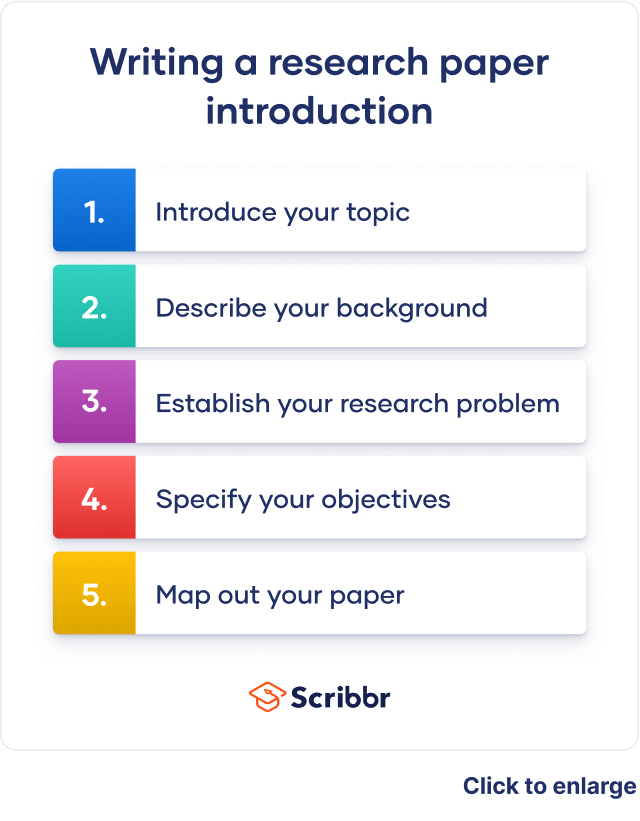
The introduction to a research paper is where you set up your topic and approach for the reader. It has several key goals:
- Present your topic and get the reader interested
- Provide background or summarize existing research
- Position your own approach
- Detail your specific research problem and problem statement
- Give an overview of the paper’s structure
The introduction looks slightly different depending on whether your paper presents the results of original empirical research or constructs an argument by engaging with a variety of sources.
Instantly correct all language mistakes in your text
Upload your document to correct all your mistakes in minutes
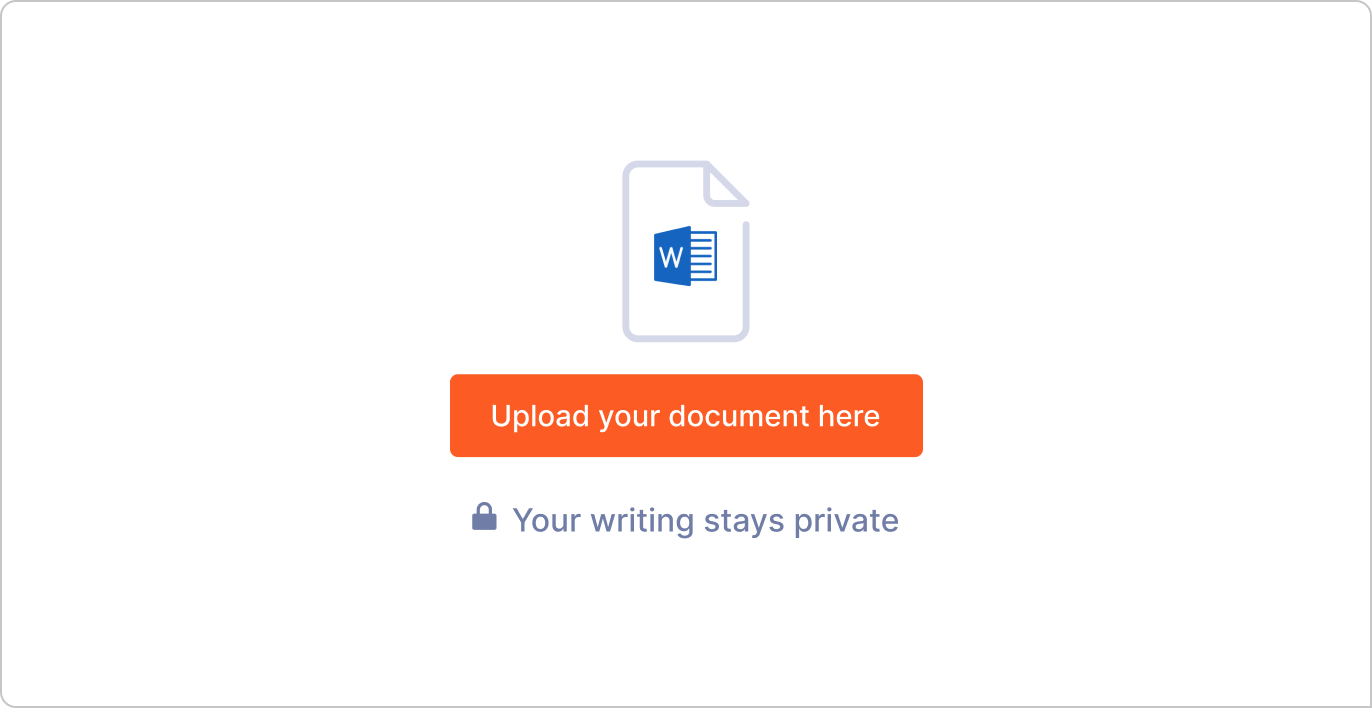
Table of contents
Step 1: introduce your topic, step 2: describe the background, step 3: establish your research problem, step 4: specify your objective(s), step 5: map out your paper, research paper introduction examples, frequently asked questions about the research paper introduction.
The first job of the introduction is to tell the reader what your topic is and why it’s interesting or important. This is generally accomplished with a strong opening hook.
The hook is a striking opening sentence that clearly conveys the relevance of your topic. Think of an interesting fact or statistic, a strong statement, a question, or a brief anecdote that will get the reader wondering about your topic.
For example, the following could be an effective hook for an argumentative paper about the environmental impact of cattle farming:
A more empirical paper investigating the relationship of Instagram use with body image issues in adolescent girls might use the following hook:
Don’t feel that your hook necessarily has to be deeply impressive or creative. Clarity and relevance are still more important than catchiness. The key thing is to guide the reader into your topic and situate your ideas.
Receive feedback on language, structure, and formatting
Professional editors proofread and edit your paper by focusing on:
- Academic style
- Vague sentences
- Style consistency
See an example
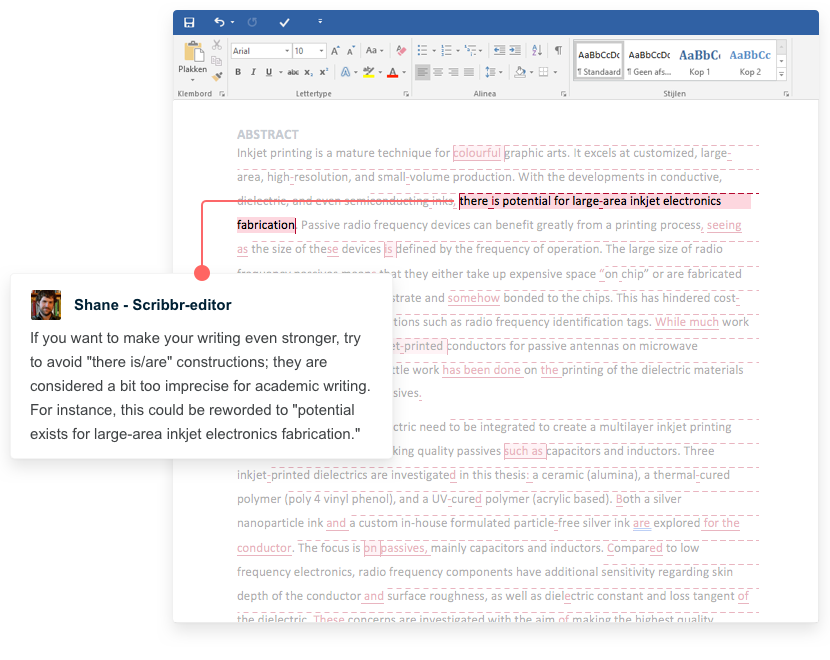
This part of the introduction differs depending on what approach your paper is taking.
In a more argumentative paper, you’ll explore some general background here. In a more empirical paper, this is the place to review previous research and establish how yours fits in.
Argumentative paper: Background information
After you’ve caught your reader’s attention, specify a bit more, providing context and narrowing down your topic.
Provide only the most relevant background information. The introduction isn’t the place to get too in-depth; if more background is essential to your paper, it can appear in the body .
Empirical paper: Describing previous research
For a paper describing original research, you’ll instead provide an overview of the most relevant research that has already been conducted. This is a sort of miniature literature review —a sketch of the current state of research into your topic, boiled down to a few sentences.
This should be informed by genuine engagement with the literature. Your search can be less extensive than in a full literature review, but a clear sense of the relevant research is crucial to inform your own work.
Begin by establishing the kinds of research that have been done, and end with limitations or gaps in the research that you intend to respond to.
The next step is to clarify how your own research fits in and what problem it addresses.
Argumentative paper: Emphasize importance
In an argumentative research paper, you can simply state the problem you intend to discuss, and what is original or important about your argument.
Empirical paper: Relate to the literature
In an empirical research paper, try to lead into the problem on the basis of your discussion of the literature. Think in terms of these questions:
- What research gap is your work intended to fill?
- What limitations in previous work does it address?
- What contribution to knowledge does it make?
You can make the connection between your problem and the existing research using phrases like the following.
Now you’ll get into the specifics of what you intend to find out or express in your research paper.
The way you frame your research objectives varies. An argumentative paper presents a thesis statement, while an empirical paper generally poses a research question (sometimes with a hypothesis as to the answer).
Argumentative paper: Thesis statement
The thesis statement expresses the position that the rest of the paper will present evidence and arguments for. It can be presented in one or two sentences, and should state your position clearly and directly, without providing specific arguments for it at this point.
Empirical paper: Research question and hypothesis
The research question is the question you want to answer in an empirical research paper.
Present your research question clearly and directly, with a minimum of discussion at this point. The rest of the paper will be taken up with discussing and investigating this question; here you just need to express it.
A research question can be framed either directly or indirectly.
- This study set out to answer the following question: What effects does daily use of Instagram have on the prevalence of body image issues among adolescent girls?
- We investigated the effects of daily Instagram use on the prevalence of body image issues among adolescent girls.
If your research involved testing hypotheses , these should be stated along with your research question. They are usually presented in the past tense, since the hypothesis will already have been tested by the time you are writing up your paper.
For example, the following hypothesis might respond to the research question above:
Here's why students love Scribbr's proofreading services
Discover proofreading & editing
The final part of the introduction is often dedicated to a brief overview of the rest of the paper.
In a paper structured using the standard scientific “introduction, methods, results, discussion” format, this isn’t always necessary. But if your paper is structured in a less predictable way, it’s important to describe the shape of it for the reader.
If included, the overview should be concise, direct, and written in the present tense.
- This paper will first discuss several examples of survey-based research into adolescent social media use, then will go on to …
- This paper first discusses several examples of survey-based research into adolescent social media use, then goes on to …
Full examples of research paper introductions are shown in the tabs below: one for an argumentative paper, the other for an empirical paper.
- Argumentative paper
- Empirical paper
Are cows responsible for climate change? A recent study (RIVM, 2019) shows that cattle farmers account for two thirds of agricultural nitrogen emissions in the Netherlands. These emissions result from nitrogen in manure, which can degrade into ammonia and enter the atmosphere. The study’s calculations show that agriculture is the main source of nitrogen pollution, accounting for 46% of the country’s total emissions. By comparison, road traffic and households are responsible for 6.1% each, the industrial sector for 1%. While efforts are being made to mitigate these emissions, policymakers are reluctant to reckon with the scale of the problem. The approach presented here is a radical one, but commensurate with the issue. This paper argues that the Dutch government must stimulate and subsidize livestock farmers, especially cattle farmers, to transition to sustainable vegetable farming. It first establishes the inadequacy of current mitigation measures, then discusses the various advantages of the results proposed, and finally addresses potential objections to the plan on economic grounds.
The rise of social media has been accompanied by a sharp increase in the prevalence of body image issues among women and girls. This correlation has received significant academic attention: Various empirical studies have been conducted into Facebook usage among adolescent girls (Tiggermann & Slater, 2013; Meier & Gray, 2014). These studies have consistently found that the visual and interactive aspects of the platform have the greatest influence on body image issues. Despite this, highly visual social media (HVSM) such as Instagram have yet to be robustly researched. This paper sets out to address this research gap. We investigated the effects of daily Instagram use on the prevalence of body image issues among adolescent girls. It was hypothesized that daily Instagram use would be associated with an increase in body image concerns and a decrease in self-esteem ratings.
The introduction of a research paper includes several key elements:
- A hook to catch the reader’s interest
- Relevant background on the topic
- Details of your research problem
and your problem statement
- A thesis statement or research question
- Sometimes an overview of the paper
Don’t feel that you have to write the introduction first. The introduction is often one of the last parts of the research paper you’ll write, along with the conclusion.
This is because it can be easier to introduce your paper once you’ve already written the body ; you may not have the clearest idea of your arguments until you’ve written them, and things can change during the writing process .
The way you present your research problem in your introduction varies depending on the nature of your research paper . A research paper that presents a sustained argument will usually encapsulate this argument in a thesis statement .
A research paper designed to present the results of empirical research tends to present a research question that it seeks to answer. It may also include a hypothesis —a prediction that will be confirmed or disproved by your research.
Cite this Scribbr article
If you want to cite this source, you can copy and paste the citation or click the “Cite this Scribbr article” button to automatically add the citation to our free Citation Generator.
Caulfield, J. (2023, March 27). Writing a Research Paper Introduction | Step-by-Step Guide. Scribbr. Retrieved April 6, 2024, from https://www.scribbr.com/research-paper/research-paper-introduction/
Is this article helpful?

Jack Caulfield
Other students also liked, writing strong research questions | criteria & examples, writing a research paper conclusion | step-by-step guide, research paper format | apa, mla, & chicago templates, what is your plagiarism score.

IMAGES
VIDEO
COMMENTS
Table of contents. Step 1: Hook your reader. Step 2: Give background information. Step 3: Present your thesis statement. Step 4: Map your essay's structure. Step 5: Check and revise. More examples of essay introductions. Other interesting articles. Frequently asked questions about the essay introduction.
Here are the key takeaways for how to write essay introduction: 3. Hook the Reader: Start with an engaging hook to grab the reader's attention. This could be a compelling question, a surprising fact, a relevant quote, or an anecdote. Provide Background: Give a brief overview of the topic, setting the context and stage for the discussion.
Tips for writing introductions • If you are writing in a new discipline, you should always make sure to ask about conventions and expectations for introductions, just as you would for any other aspect of the essay. For example, while it may be acceptable to write a two-paragraph (or longer) introduction for your papers in some courses ...
How to Write an Essay Introduction. An essay introduction has four main steps: Hook your reader Provide context Present your thesis statement Map your essay. Hook Your Reader. The first part of your introduction should be the hook. This is where you introduce the reader to the topic of the essay. A great hook should be clear, concise, and catchy.
A good essay introduction catches the reader's attention immediately, sets up your argument, and tells the reader what to expect. This video will walk you th...
An introduction serves three main purposes: 1. To capture the reader's attention: The opening paragraph is the most crucial part of your paper because it's the reader's first impression and the best clue as to whether the paper will be worth the reader's time. The best introductions will not only be informative but also include a hook ...
Unoriginal essay introductions are easily forgotten and don't demonstrate a high level of creative thinking. A college essay is intended to give insight into the personality and background of an applicant, so a standard, one-size-fits-all introduction may lead admissions officers to think they are dealing with a standard, unremarkable applicant.
Report your position or argument. Most essays do not require you to take a stance on an issue. Essays that do require you to take a stance are called either 'argumentative essays' or 'persuasive essays'. If you are writing a persuasive essay, you will need to include Step 4: Report.
An introduction generally does three things. The first part is usually a general comment that shows the reader why the topic is important, gets their interest, and leads them into the topic. It isn't actually part of your argument. The next part of the introduction is the thesis statement. This is your response to the question; your final answer.
If you're writing a 10-page paper, your introduction should be approximately 1 page. For shorter essays under 1,000 words, keep your introduction to 1 paragraph, between 100 and 200 words. Always follow your instructor's guidelines for length. These rules can vary at times based on genre or form of writing. 3.
Finally, it ends with the essay's thesis: there is definitive proof of the existence of ghosts in the quantum realm. It all works because the author used the parts of an essay introduction well. Conclusion. For attention-grabbing introductions, an understanding of essay introduction structure and how to write an essay introduction is required.
The 3 Main Parts of an Intro Paragraph. In general, an intro paragraph is going to have three main parts: a hook, context, and a thesis statement. Each of these pieces of the intro plays a key role in acquainting the reader with the topic and purpose of your essay. Below, we'll explain how to start an introduction paragraph by writing an ...
An essay is a focused piece of writing that explains, argues, describes, or narrates. In high school, you may have to write many different types of essays to develop your writing skills. Academic essays at college level are usually argumentative : you develop a clear thesis about your topic and make a case for your position using evidence ...
Harvard College Writing Center 2 Tips for Reading an Assignment Prompt When you receive a paper assignment, your first step should be to read the assignment prompt carefully to make sure you understand what you are being asked to do. Sometimes your assignment will be open-ended ("write a paper about anything in the course that interests you").
In general, your introductions should contain the following elements: When you're writing an essay, it's helpful to think about what your reader needs to know in order to follow your argument. Your introduction should include enough information so that readers can understand the context for your thesis. For example, if you are analyzing ...
The essay writing process consists of three main stages: Preparation: Decide on your topic, do your research, and create an essay outline. Writing: Set out your argument in the introduction, develop it with evidence in the main body, and wrap it up with a conclusion. Revision: Check your essay on the content, organization, grammar, spelling ...
Sample College Essay 2 with Feedback. This content is licensed by Khan Academy and is available for free at www.khanacademy.org. College essays are an important part of your college application and give you the chance to show colleges and universities your personality. This guide will give you tips on how to write an effective college essay.
Go online and type "write my essay" in a search bar. Start scrolling through the pages and open websites in order to find the most suitable for you. Don't be afraid to compare prices. After all, saving money is the same essential, as saving your time. Essay writing service shouldn't be way too cheap (if you don't want your paper to be ...
The basic structure of an essay always consists of an introduction, a body, and a conclusion. But for many students, the most difficult part of structuring an essay is deciding how to organize information within the body. This article provides useful templates and tips to help you outline your essay, make decisions about your structure, and ...
Whether you're writing an essay, a blog post, a novel, or a business proposal, the introduction plays a crucial role in setting the tone and capturing attention. Here's how introductions work in different types of content: 1. Essay Introductions. In essays, the introduction is where you present your main argument or thesis.
First, it saves your time. Essay help allows you not to worry about the deadline and devote your time to whatever desired. Second, you are getting a perfect result. Without any breakdowns, sleepless nights, thousands of drafts! Sounds like a good idea! Third, best essay writing service isn't that expensive.
Table of contents. Step 1: Introduce your topic. Step 2: Describe the background. Step 3: Establish your research problem. Step 4: Specify your objective (s) Step 5: Map out your paper. Research paper introduction examples. Frequently asked questions about the research paper introduction.